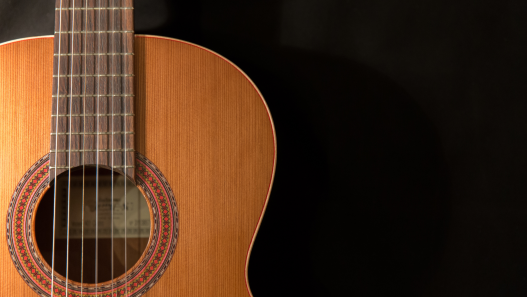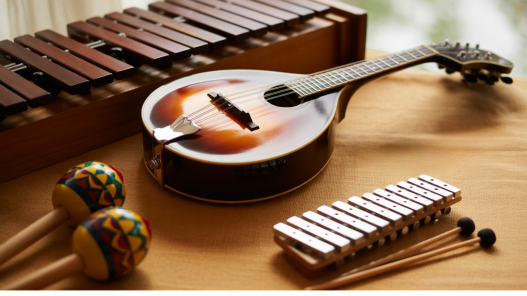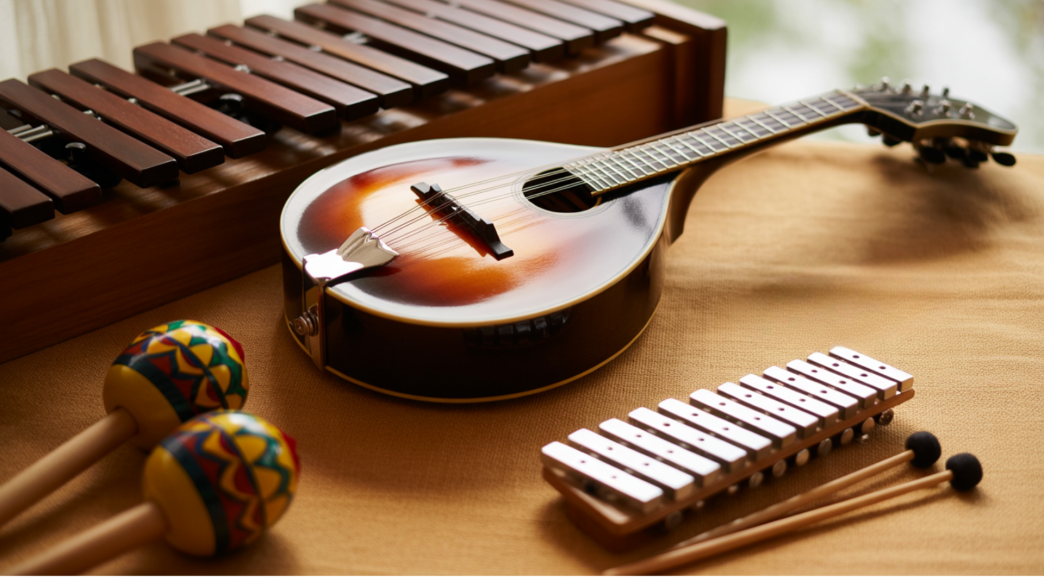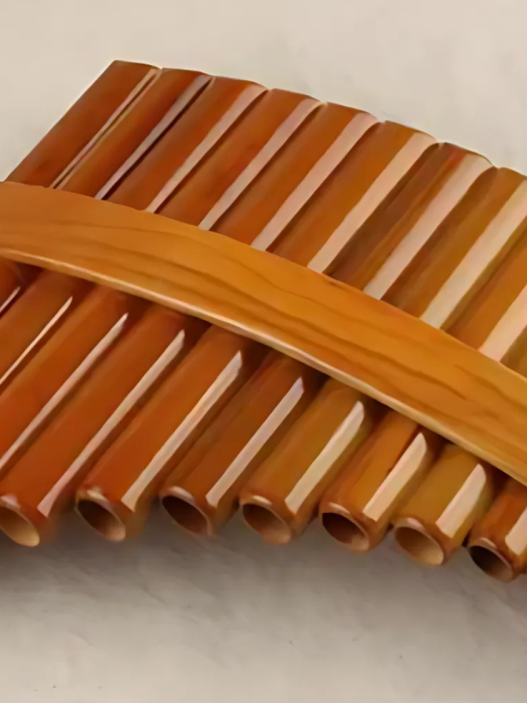“Did you know the marimba was originally made from gourds and is considered the national instrument of Guatemala?”
Music has been with us since the dawn of time, shaping cultures and uniting people. That simple mandolin in your local music store? It has relatives in cultures across the world, each with its own unique voice.
The world of music is huge, with thousands of instruments from every corner of the globe. Some you know well, but others might be complete mysteries.
Hidden among the alphabet are some true musical gems that start with the letter M. These instruments have shaped music across different cultures and periods.
Popular Instruments Starting with M
These instruments have made their mark on music worldwide. You’ve probably heard them in your favorite songs or seen them in concerts. Some might even be sitting in your school’s music room right now!
1. Mandolin
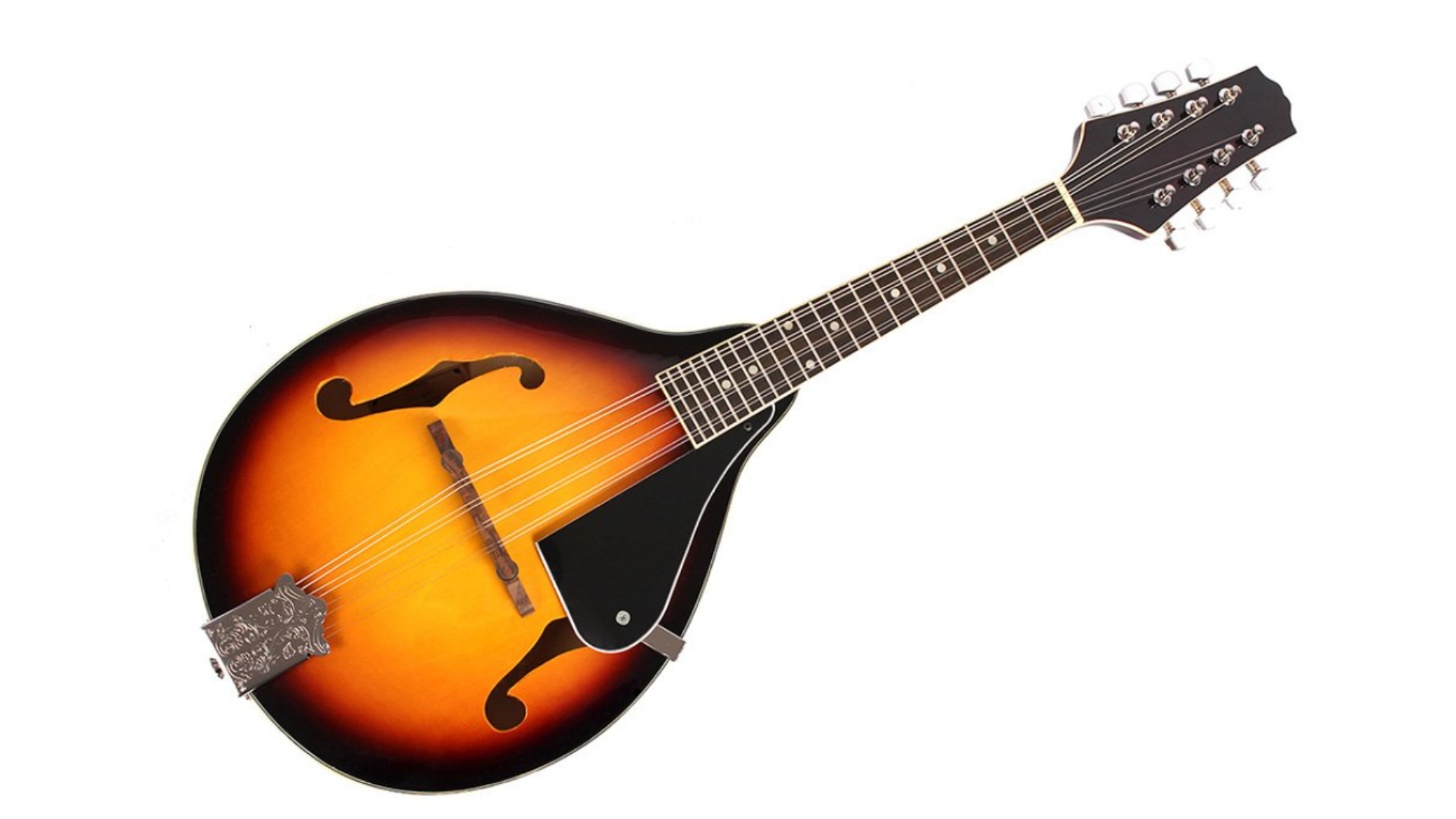
The mandolin is a small, lute-like string instrument with four pairs of strings, popular in folk, classical, and popular music.
- Origin: The mandolin originated in Italy during the 18th century, evolving from earlier lute family instruments.
- Sound: It has a bright, crisp, and penetrating sound, with a distinctive tremolo technique creating sustained melodies.
- How it works: Musicians pluck the paired strings with a pick while fretting the neck to create melodies and chords.
- Interesting fact: The mandolin’s strings are tuned like a violin (G-D-A-E), making it popular among violinists as a secondary instrument.
2. Marimba
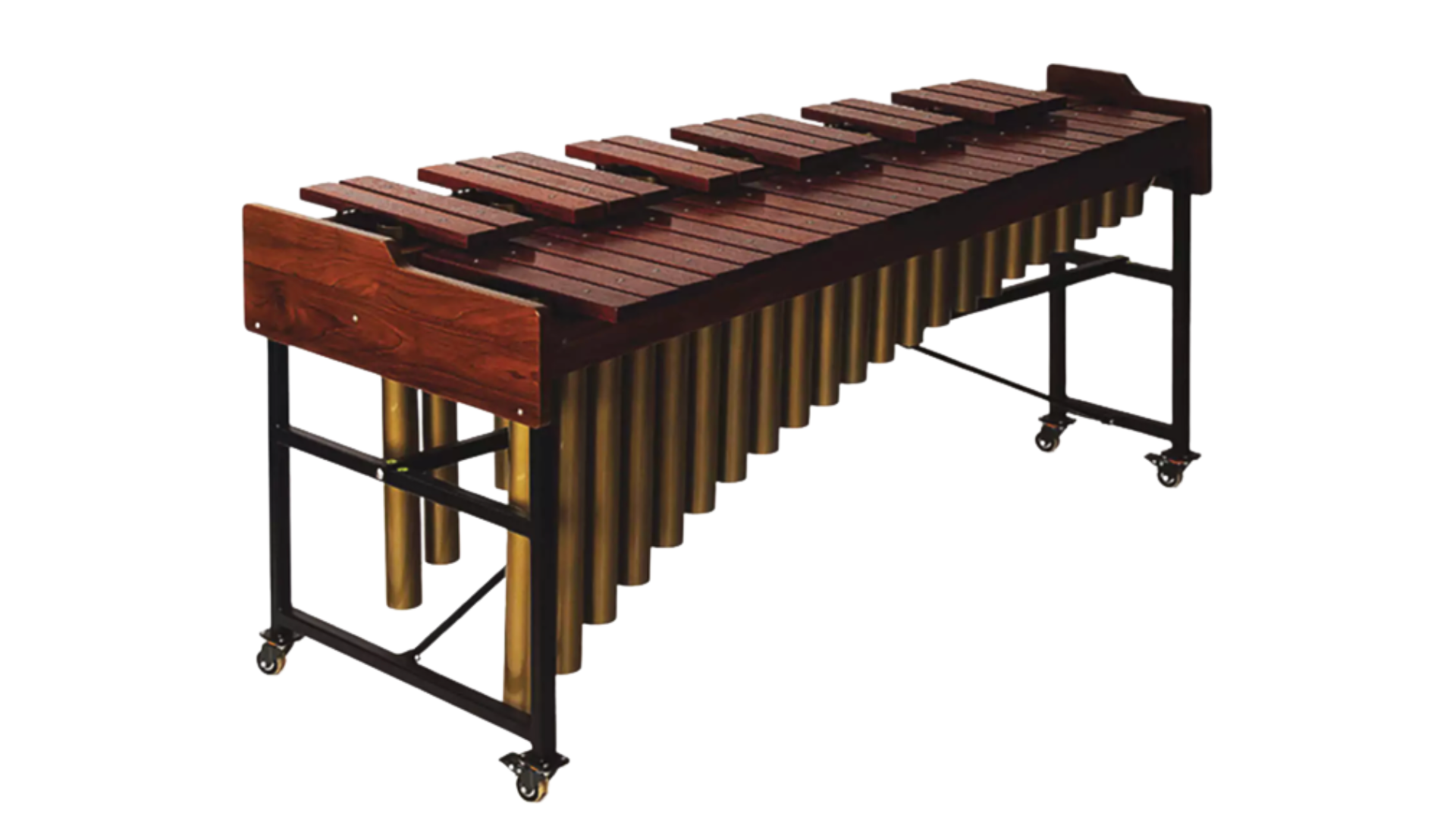
The marimba is a wooden xylophone with resonator tubes, creating warm, mellow tones popular in both classical and popular music.
- Origin: The marimba originated in Africa and was brought to Central America, where it evolved into the modern concert instrument.
- Sound: It produces a warm, woody, and resonant tone, with the resonator tubes amplifying and enriching each note.
- How it works: Musicians strike wooden bars with mallets, with each bar tuned to a specific pitch and paired with a resonating tube.
- Interesting fact: The marimba is the national instrument of Guatemala and is considered essential to Central American musical identity.
3. Melodica
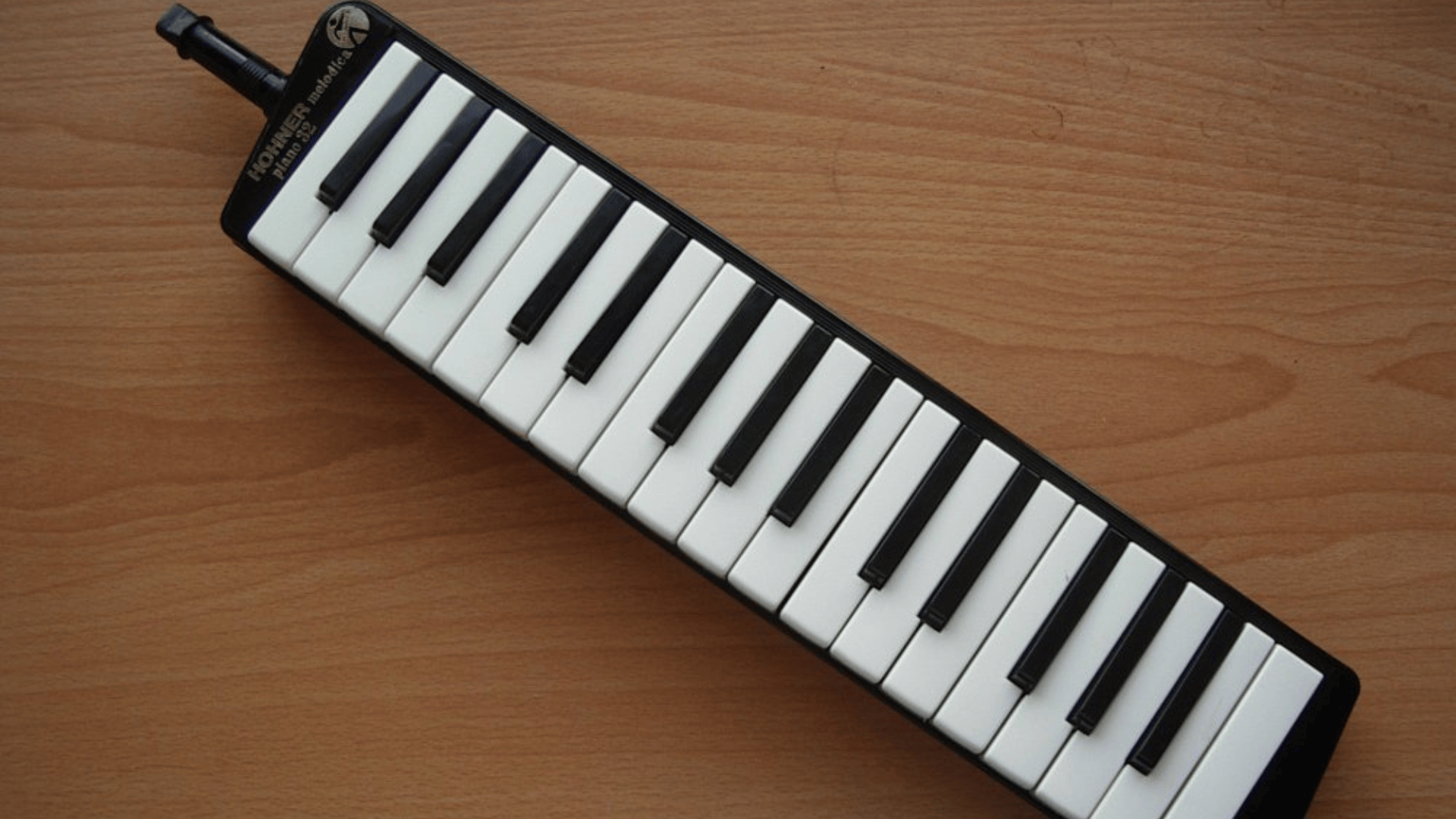
The melodica is a small keyboard wind instrument that combines piano keys with harmonica-like reeds, creating a portable and expressive instrument.
- Origin: The melodica was invented in the 1950s in Germany by Hohner, designed as an educational instrument for teaching music fundamentals.
- Sound: It has a bright, clear, and somewhat breathy sound, similar to a harmonica but with the precision of a keyboard.
- How it works: Musicians blow air through a mouthpiece while pressing piano-style keys that open reeds tuned to different pitches.
- Interesting fact: The melodica gained popularity in reggae music through Augustus Pablo, who made it a signature sound in Jamaican music.
4. Maracas
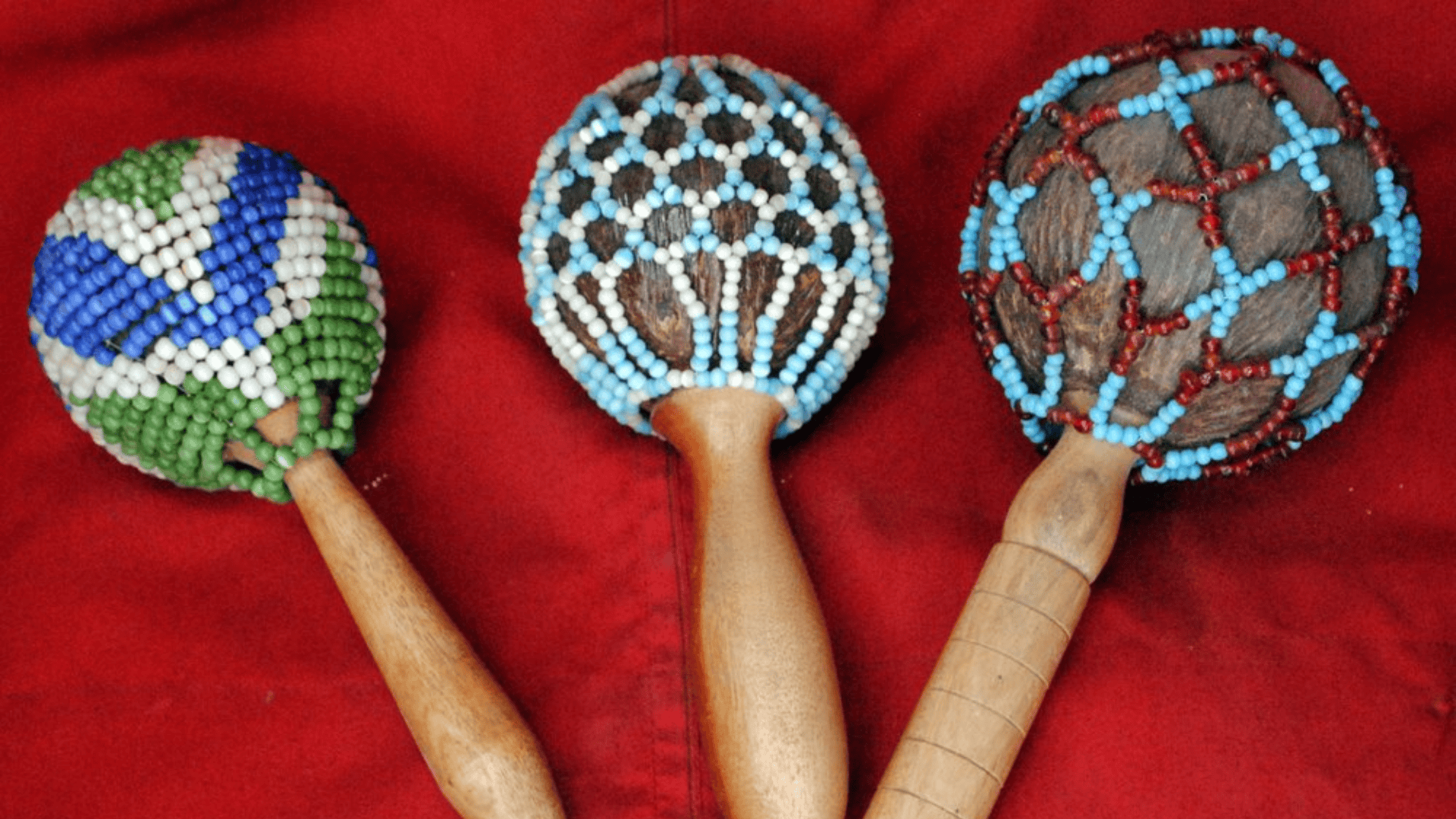
Maracas are paired percussion instruments consisting of hollow shells filled with beads or seeds, shaken to create rhythm.
- Origin: Maracas originated in Latin America, particularly among indigenous peoples who used gourds filled with seeds or stones.
- Sound: They produce a bright, rhythmic, and infectious sound, with the ability to create both subtle textures and driving rhythms.
- How it works: Musicians shake the instruments to make the internal beads or seeds strike the shell walls, creating percussive sounds.
- Interesting fact: Traditional maracas were often made from sacred gourds and used in religious ceremonies before becoming popular in secular music.
5. Mridangam
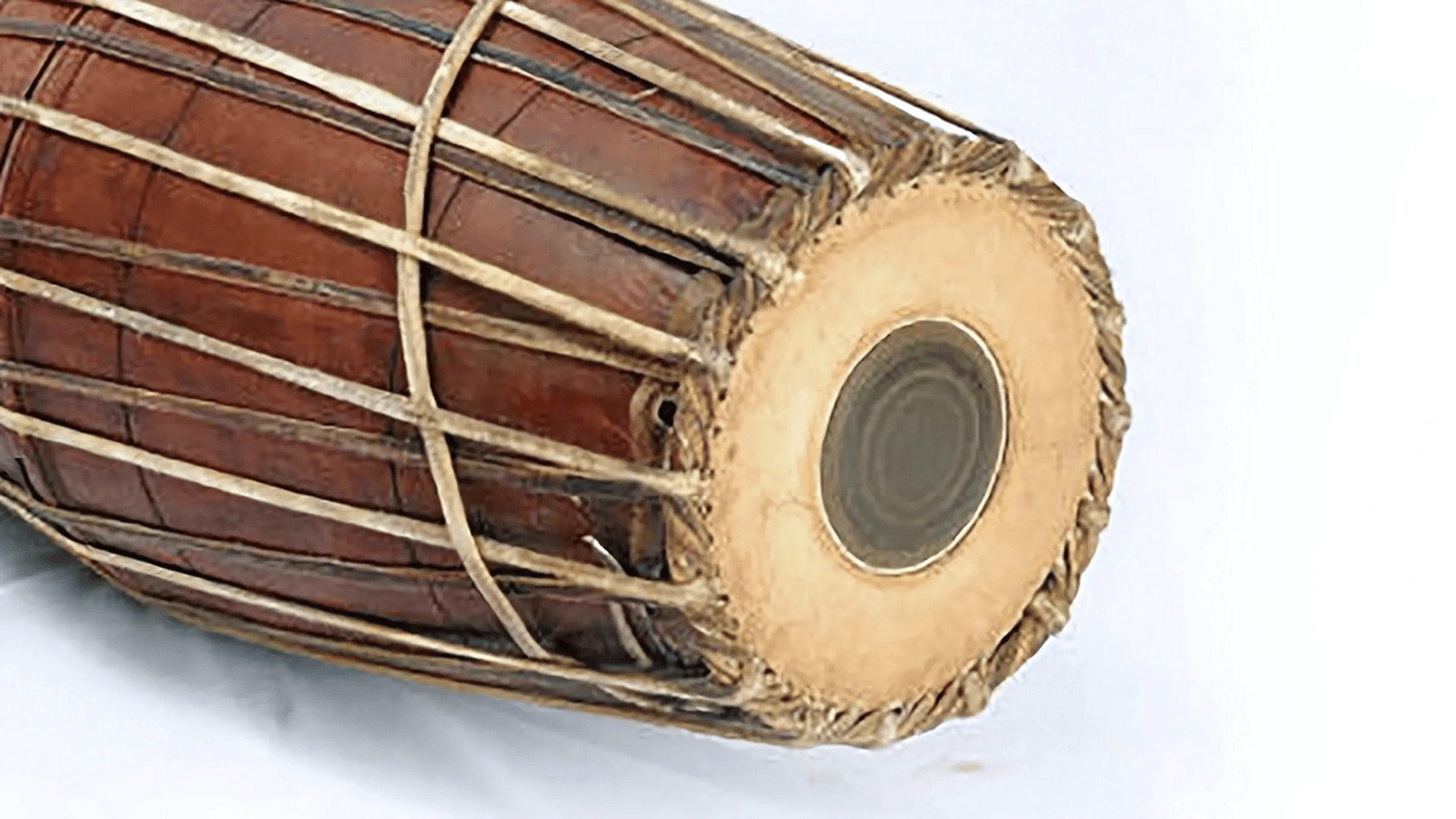
The mridangam is a South Indian double-headed drum played with hands and fingers, essential in Carnatic classical music.
- Origin: The mridangam originated in South India over 2,000 years ago and is considered the king of percussion in Indian classical music.
- Sound: It produces a complex and rhythmically refined sound, with distinct tones emanating from different areas of the drumheads.
- How it works: Musicians strike different parts of both drumheads with fingers, palms, and hands to create intricate rhythmic patterns.
- Interesting fact: The right drumhead is tuned to specific pitches and can play melodies, making the mridangam both rhythmic and melodic.
6. Music Box
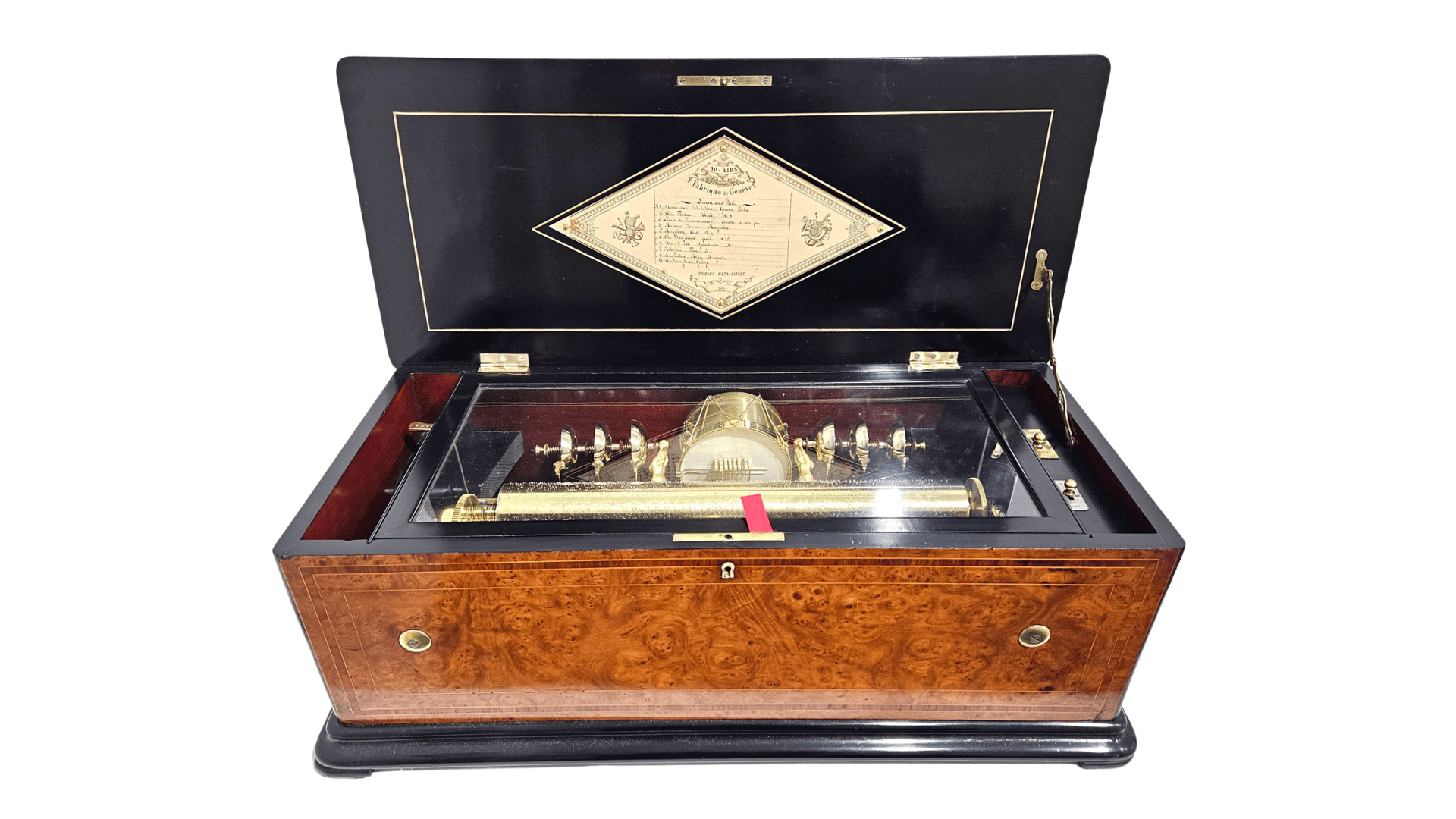
A music box is a mechanical instrument that plays melodies using a cylinder or disc with pins that pluck tuned metal strips.
- Origin: Music boxes originated in Switzerland in the 18th century and became popular parlor instruments in the 19th century.
- Sound: They produce a delicate, mechanical, and nostalgic sound, with each metal strip producing a pure, bell-like tone.
- How it works: A rotating cylinder with pins plucks tuned metal strips in sequence, creating pre-programmed melodies.
- Interesting fact: High-quality music boxes can play complex classical pieces with multiple voices, demonstrating remarkable mechanical precision.
7. Mouth Organ

The mouth organ is a small free-reed wind instrument played by blowing and drawing air through chambers.
- Origin: The mouth organ developed from ancient Chinese instruments and was adapted into the modern harmonica in 19th-century Europe.
- Sound: It has a reedy, expressive sound capable of both melody and harmony, with a distinctive vibrato effect.
- How it works: Air flows through metal reeds, creating sound, with different chambers producing different pitches when air is blown or drawn.
- Interesting fact: The mouth organ can play chords and melodies simultaneously, making it one of the most versatile small instruments.
8. Mbira
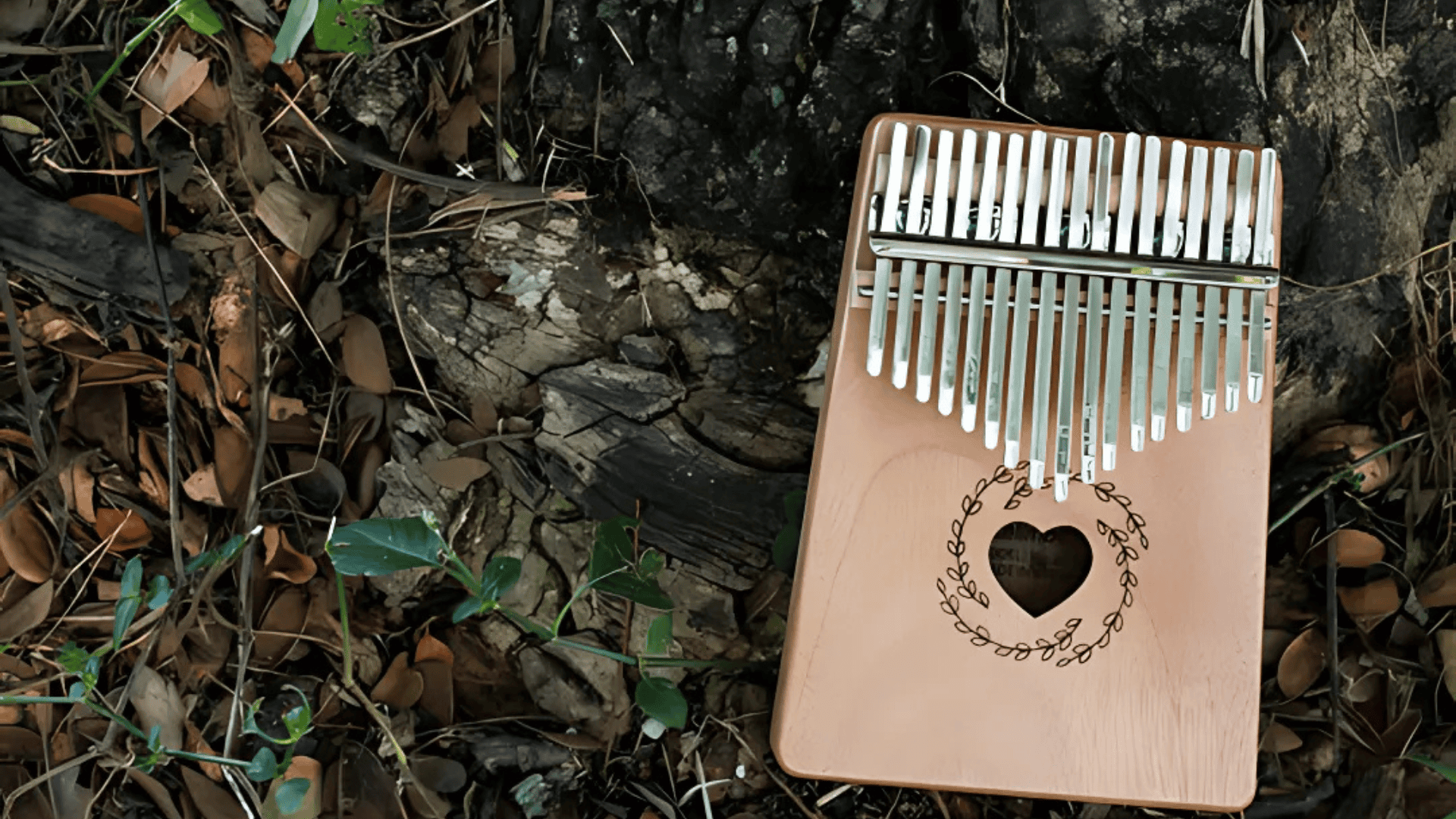
The mbira is an African thumb piano with metal strips attached to a wooden board, central to Shona religious and social music.
- Origin: The mbira originated in Zimbabwe among the Shona people over 1,000 years ago, where it remains central to spiritual practices.
- Sound: It produces a gentle, hypnotic, and spiritually significant sound, often accompanied by bottle caps that create a buzzing effect.
- How it works: Musicians pluck metal strips with their thumbs while the wooden resonator amplifies the sound.
- Interesting fact: The mbira is believed to facilitate communication with ancestral spirits and is essential in Shona religious ceremonies.
9. Metallophone

A metallophone is any percussion instrument made of tuned metal bars or plates struck with mallets.
- Origin: Metallophones developed in various cultures worldwide, with versions found in Indonesian gamelan and Western orchestras.
- Sound: They produce a bright, penetrating, and sustaining sound, with metal bars producing clear, ringing tones.
- How it works: Musicians strike metal bars or plates with mallets, with each piece of metal tuned to a specific pitch.
- Interesting fact: The Indonesian gamelan orchestra features multiple types of metallophones, each with different roles in the complex layered music.
10. Mirliton
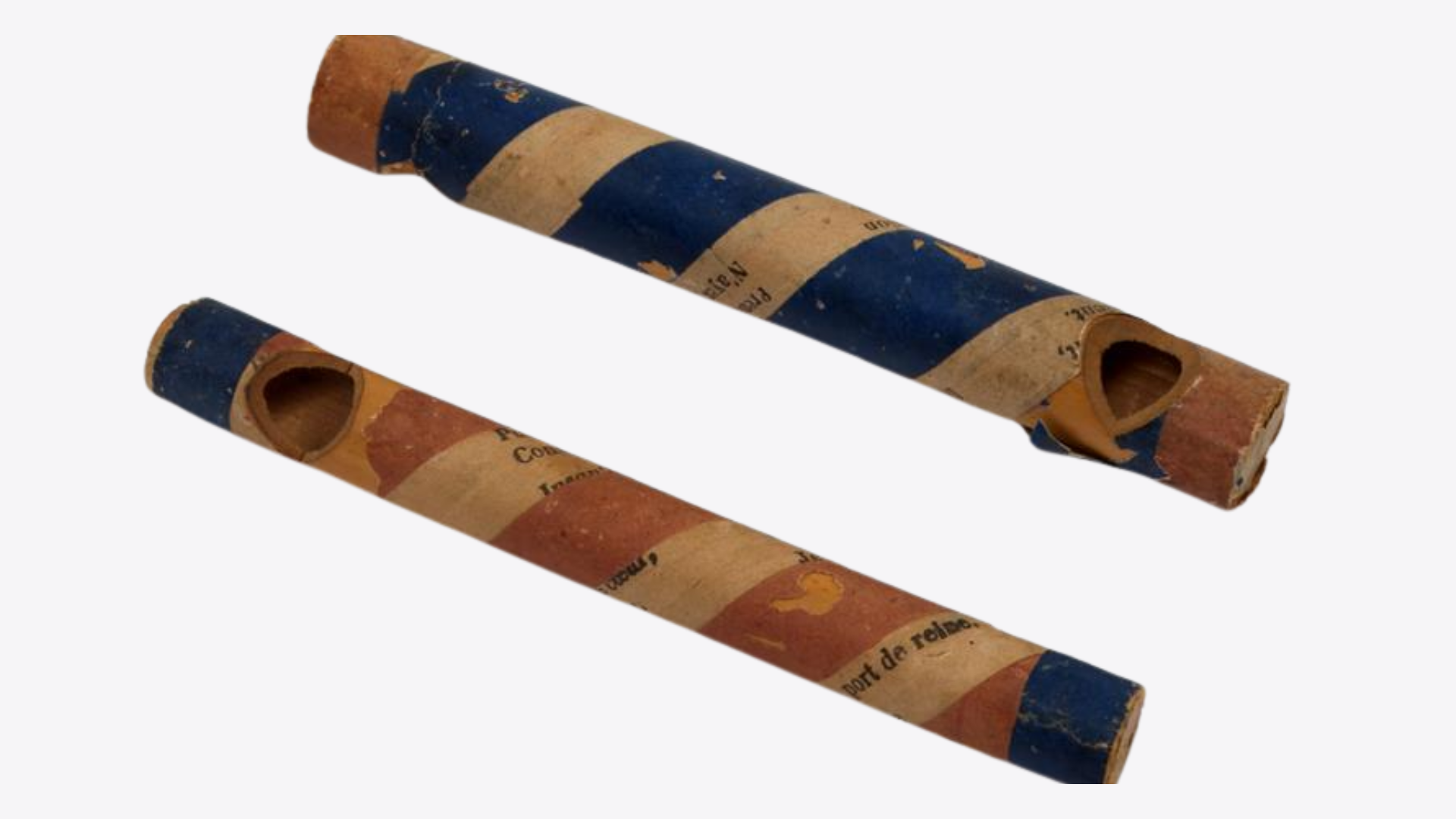
A mirliton is a membranophone that modifies voice or other sounds by vibrating a membrane, similar to a kazoo.
- Origin: Mirlitons have appeared in various cultures worldwide, with similar instruments found in Africa, Europe, and the Americas.
- Sound: They produce a buzzing and nasal sound, changing the human voice or other sounds into a distinctive, filtered effect.
- How it works: Sound waves cause a thin membrane to vibrate, creating the characteristic buzzing quality that modifies the original sound.
- Interesting fact: The kazoo is the most common modern mirliton, but similar instruments have been made from gourds, animal bladders, and other materials.
11. Military Drum
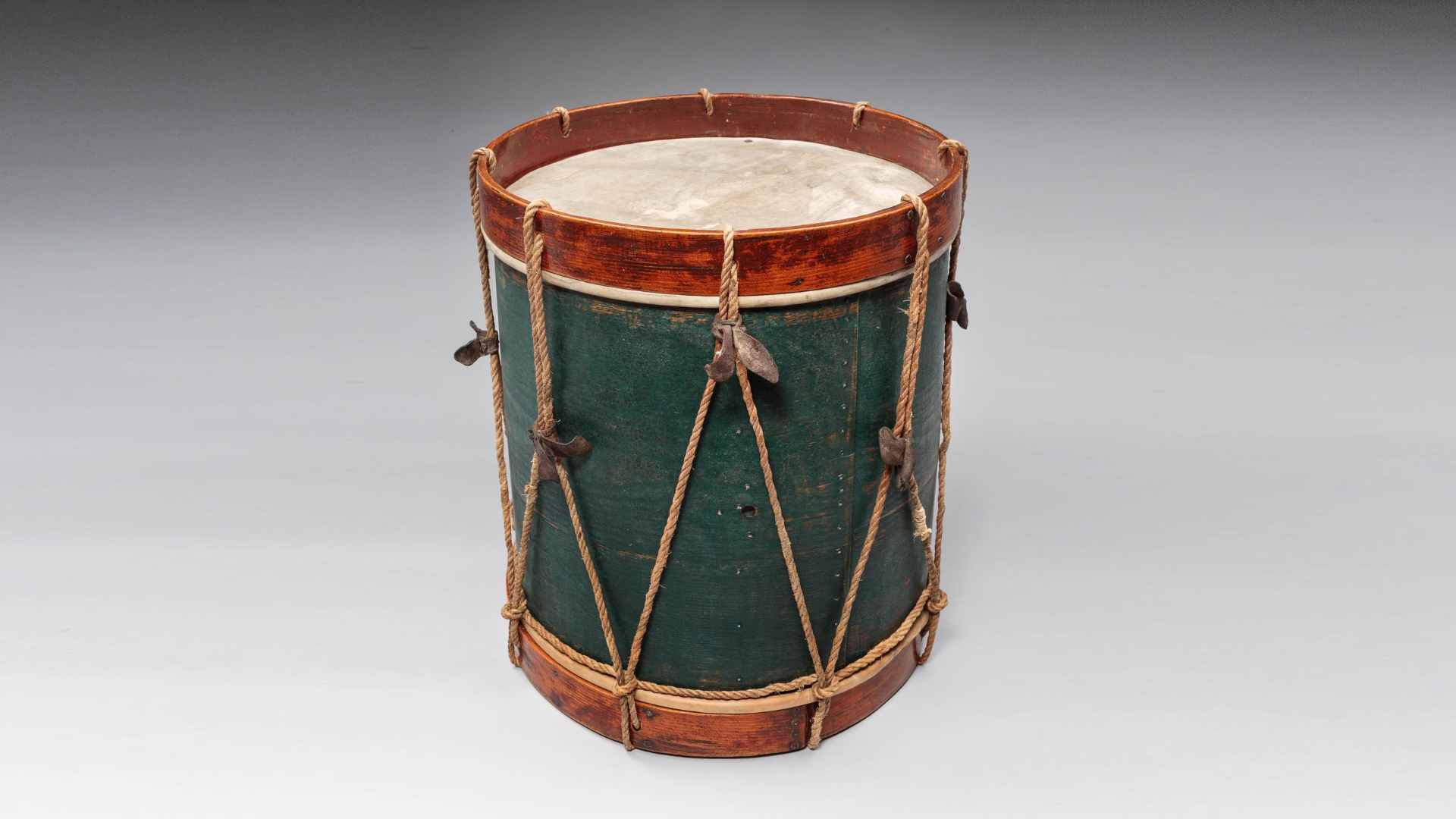
A military drum is any drum designed specifically for military use, including snare drums, bass drums, and field drums.
- Origin: Military drums developed alongside organized armies, with different cultures creating drums suited to battlefield communication and marching.
- Sound: They produce a loud, precise, and rhythmically strict sound, designed to be heard over battlefield noise and coordinate troop movements.
- How it works: Musicians use specific techniques and rhythms that can communicate commands and maintain marching cadence over long distances.
- Interesting fact: Military drumming developed many of the techniques and rhythms that later became fundamental to civilian music, especially in jazz and popular music.
12. Mandola
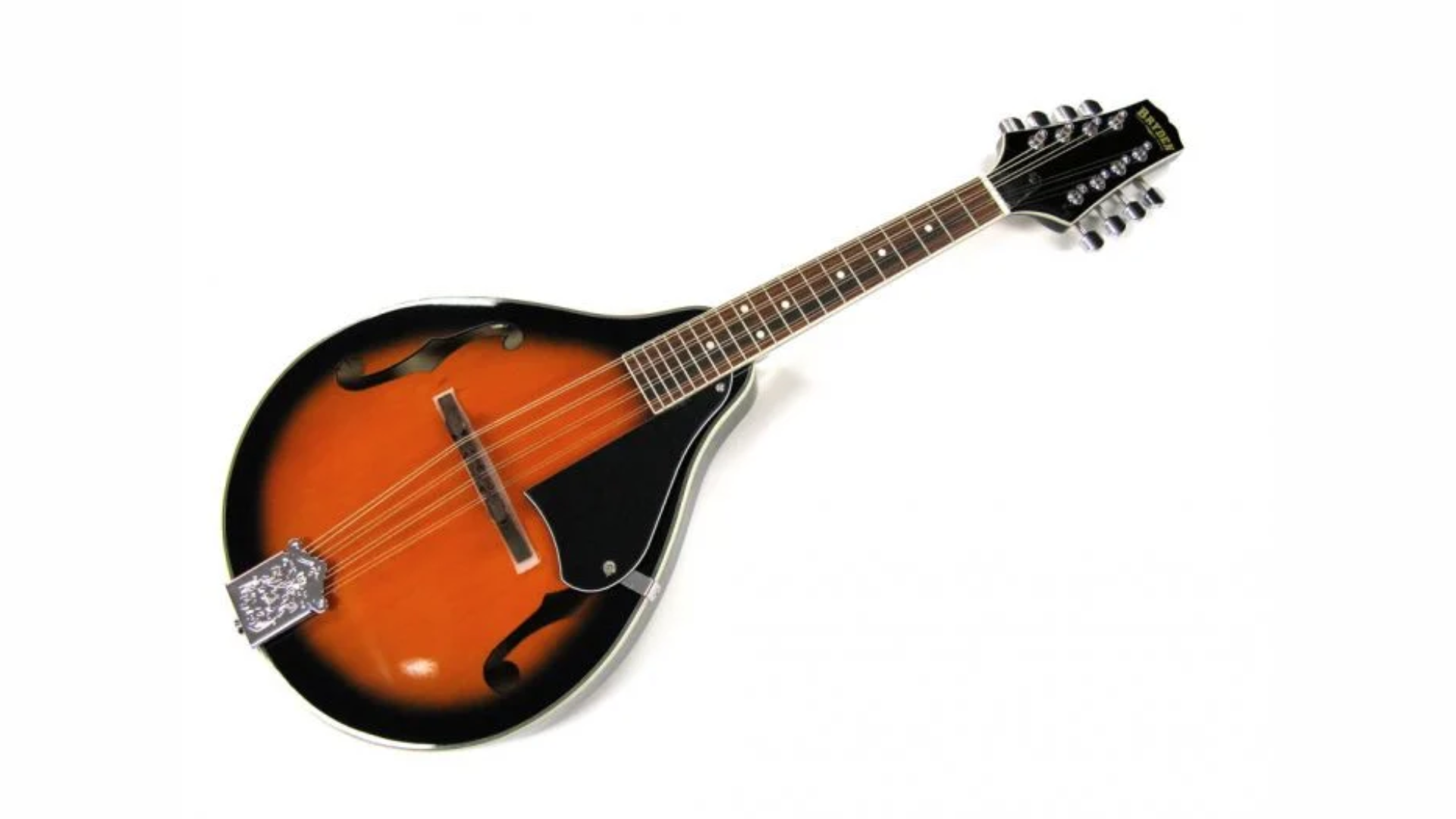
The mandola is a larger version of the mandolin, tuned an octave lower and providing the alto voice in mandolin orchestras.
- Origin: The mandola developed in Italy alongside the mandolin family, designed to provide lower voices in ensemble music.
- Sound: It has a deeper and more mellow sound than a mandolin, with a rich, warm tone perfect for harmony parts.
- How it works: Musicians play it like a mandolin but with longer strings and a larger body that produces lower pitches.
- Interesting fact: The mandola bridges the gap between the bright mandolin and the deep mandocello, making it essential in mandolin orchestras.
13. Madal

The madal is a Nepalese hand drum with two heads, central to Nepalese folk music and cultural celebrations.
- Origin: The madal originated in Nepal and has been the national drum of Nepal for centuries, essential to folk music and festivals.
- Sound: It produces a warm, rhythmic, and culturally distinctive sound, with different playing techniques creating various tones and patterns.
- How it works: Musicians play with both hands, striking different areas of the two drumheads to create bass and treble sounds.
- Interesting fact: The madal is so important to Nepalese culture that it’s featured on the country’s currency and national symbols.
14. Mark Tree
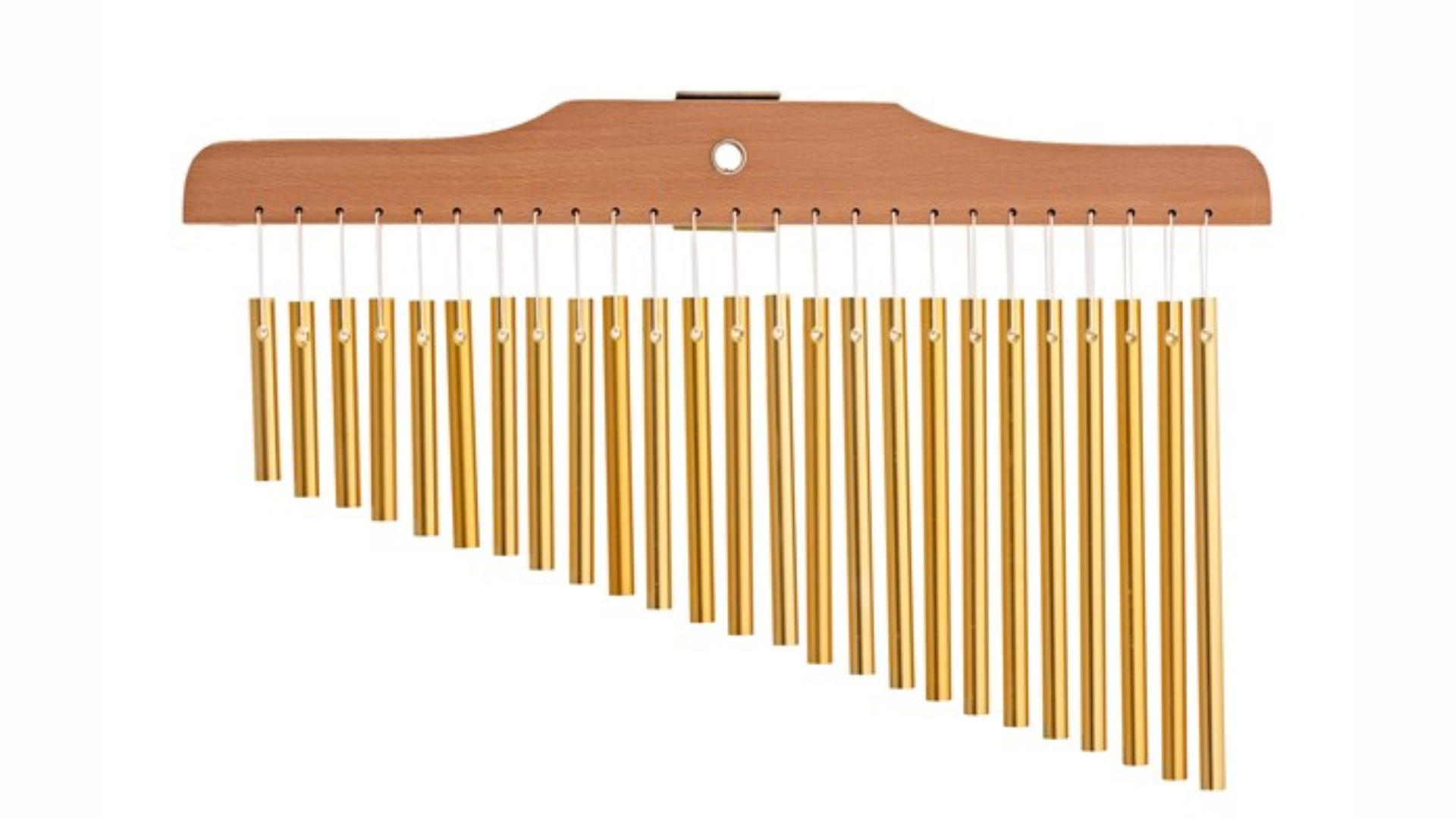
A mark tree is a percussion instrument consisting of many small metal chimes suspended on a frame, creating cascading sounds.
- Origin: The mark tree was invented in the 20th century for orchestral use, designed to create special sound effects in classical music.
- Sound: It produces a shimmering, cascading, and ethereal sound, with individual chimes creating a wave-like sonic effect.
- How it works: Musicians drag their fingers or mallets across the suspended chimes, causing them to ring in rapid succession.
- Interesting fact: The mark tree is named after its inventor, Mark Stevens, and has become a standard orchestral percussion instrument.
Lesser-Known Instruments Starting with M
These rare instruments might not be household names, but they create amazing sounds and have rich histories. Get ready to find some truly unique ways people make music around the world.
15. Morin Khuur

The morin khuur is a Mongolian horsehead fiddle with two strings, considered the national instrument of Mongolia.
- Origin: The morin khuur originated in Mongolia over 800 years ago, with legends connecting it to a magical horse that inspired its creation.
- Sound: It produces a hauntingly beautiful and expressive sound, capable of mimicking horse gallops and human voices.
- How it works: Musicians bow two strings while pressing the neck to change pitches, often using extended techniques to create special effects.
- Interesting fact: The morin khuur’s scroll is traditionally carved in the shape of a horse’s head, reflecting Mongolia’s deep connection to horses.
16. Mizmar
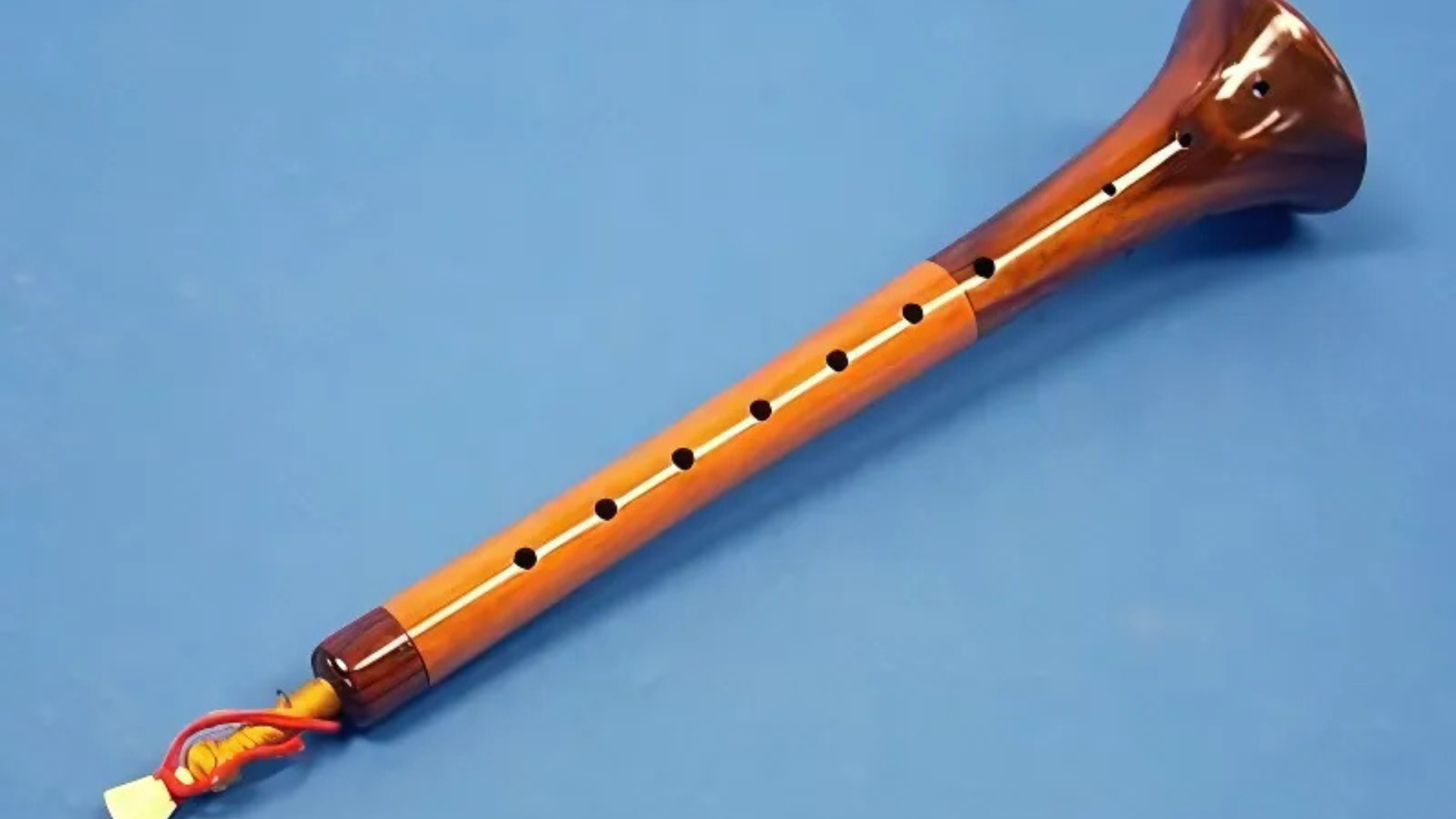
The mizmar is a Middle Eastern double-reed wind instrument similar to an oboe, used in traditional folk music and celebrations.
- Origin: The mizmar originated in the Middle East and North Africa, where it has been central to folk celebrations for over 1,000 years.
- Sound: It has a loud, piercing, and highly expressive sound, capable of cutting through the noise of outdoor festivals.
- How it works: Musicians blow through a double reed while fingering holes along the wooden body to create melodies and ornaments.
- Interesting fact: The mizmar is often played in pairs during weddings and festivals, with the two instruments creating intricate musical dialogues.
17. Maguhu

The maguhu is a Chinese bowed string instrument with two strings, similar to the erhu but with a distinctive sound.
- Origin: The maguhu originated in China as part of the huqin family of bowed string instruments used in traditional Chinese music.
- Sound: It produces an expressive and vocal-like sound, capable of great emotional range and subtle ornaments.
- How it works: Musicians bow two strings while pressing them against the neck to change pitches, without a fingerboard.
- Interesting fact: The maguhu’s sound box is often made from python skin, which gives it a distinctive timbre different from other Chinese fiddles.
18. Mayuri
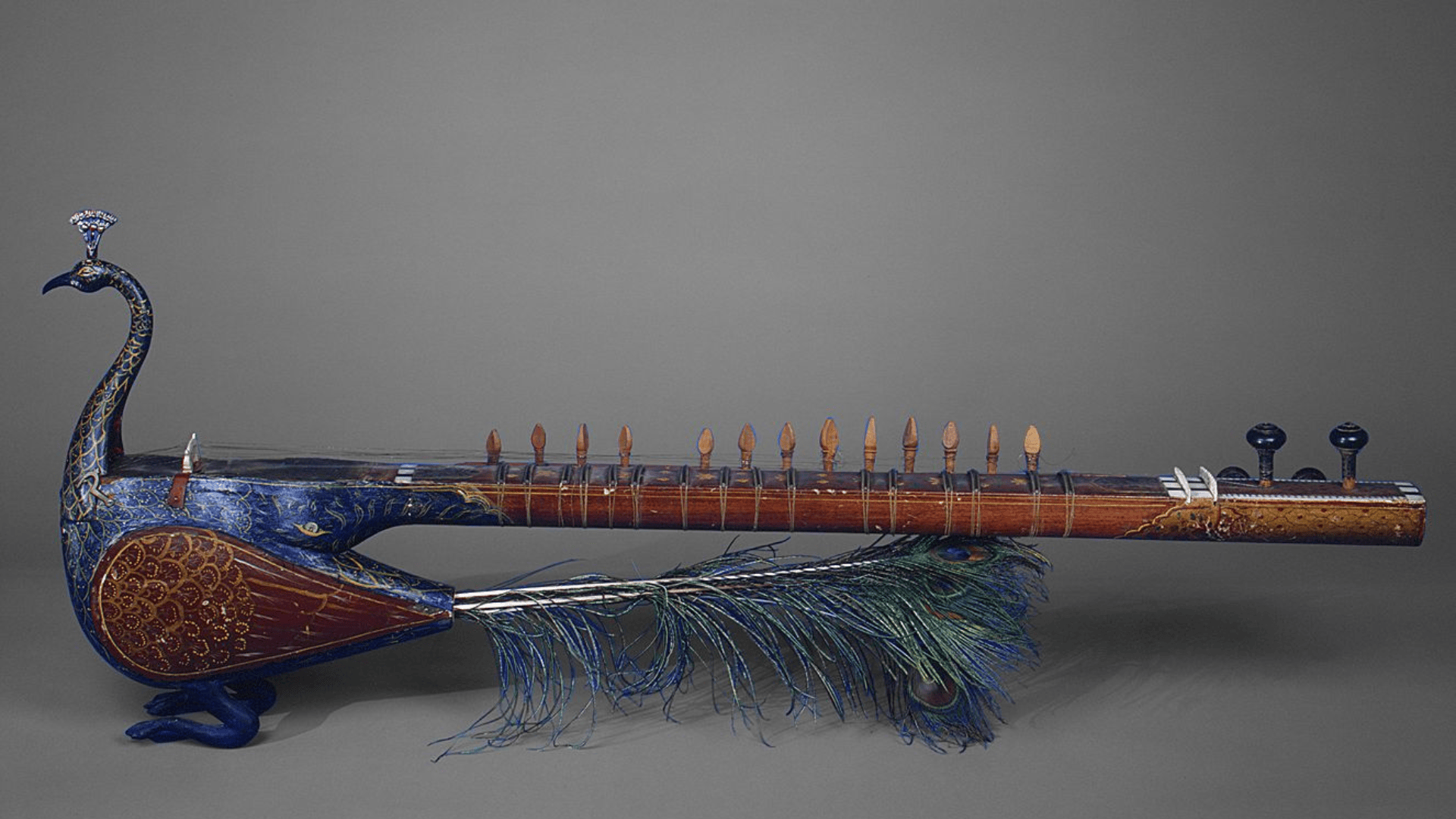
The mayuri is an Indian string instrument shaped like a peacock, combining its beauty with musical function.
- Origin: The mayuri originated in India, where it was developed as both a musical instrument and a work of art for royal courts.
- Sound: It has a sound similar to a sitar but more delicate, with sympathetic strings adding harmonic richness.
- How it works: Musicians pluck the main strings while sympathetic strings resonate, creating complex harmonic textures.
- Interesting fact: The mayuri’s peacock shape isn’t just decorative – the curved neck and body actually improve the instrument’s acoustic properties.
19. Mokugyo
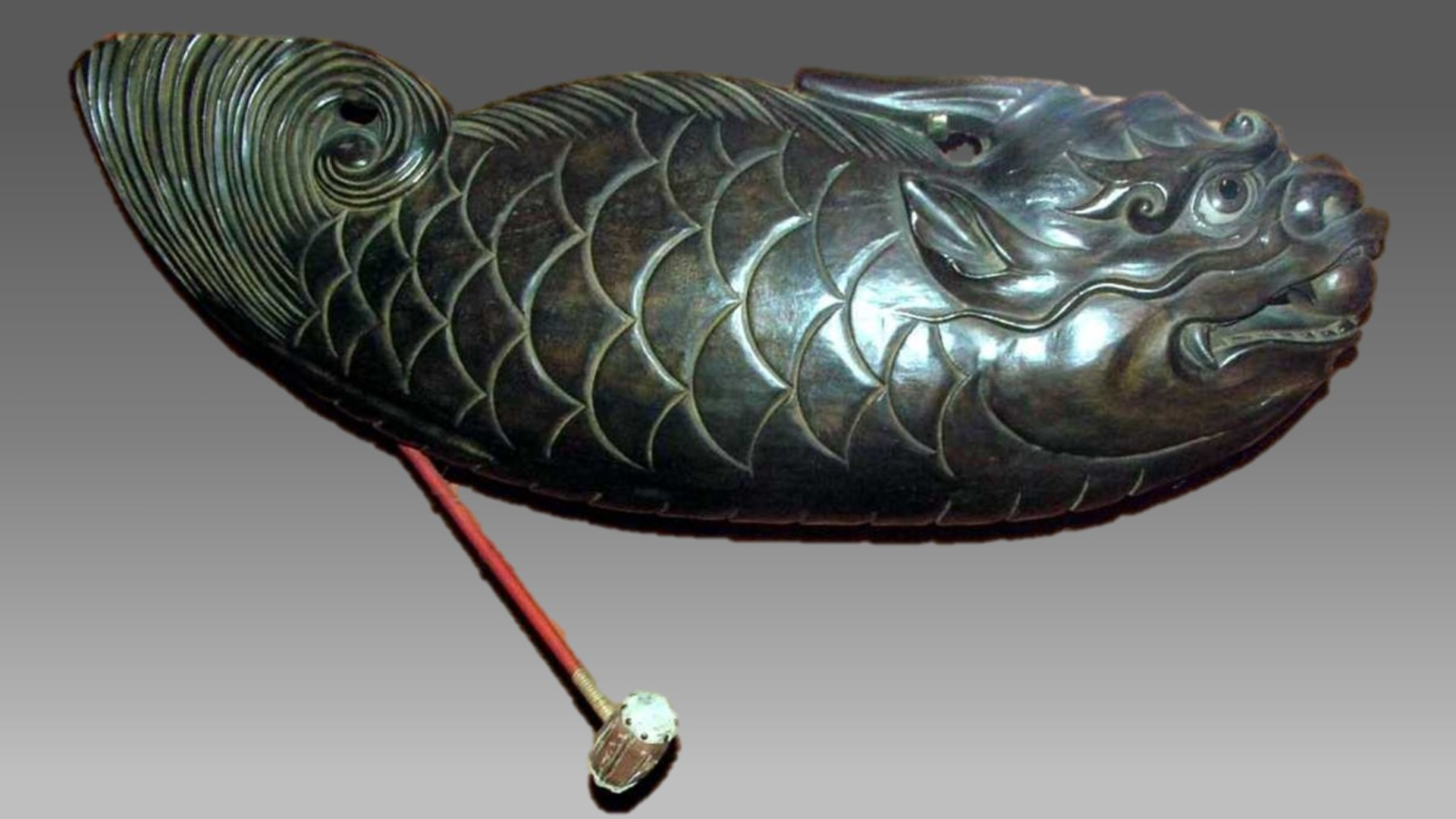
The mokugyo is a Japanese wooden fish drum used in Buddhist temples to keep time during chanting and meditation.
- Origin: The mokugyo originated in Japanese Buddhist temples, where it has been used for centuries in religious ceremonies.
- Sound: It produces a hollow, woody, and rhythmically precise sound, designed to maintain steady timing during long chanting sessions.
- How it works: Musicians strike the hollow wooden fish with a padded mallet to create clear, penetrating beats.
- Interesting fact: The fish shape symbolizes alertness in Buddhist tradition, as fish never close their eyes, reminding practitioners to stay awake during meditation.
20. Mijwiz
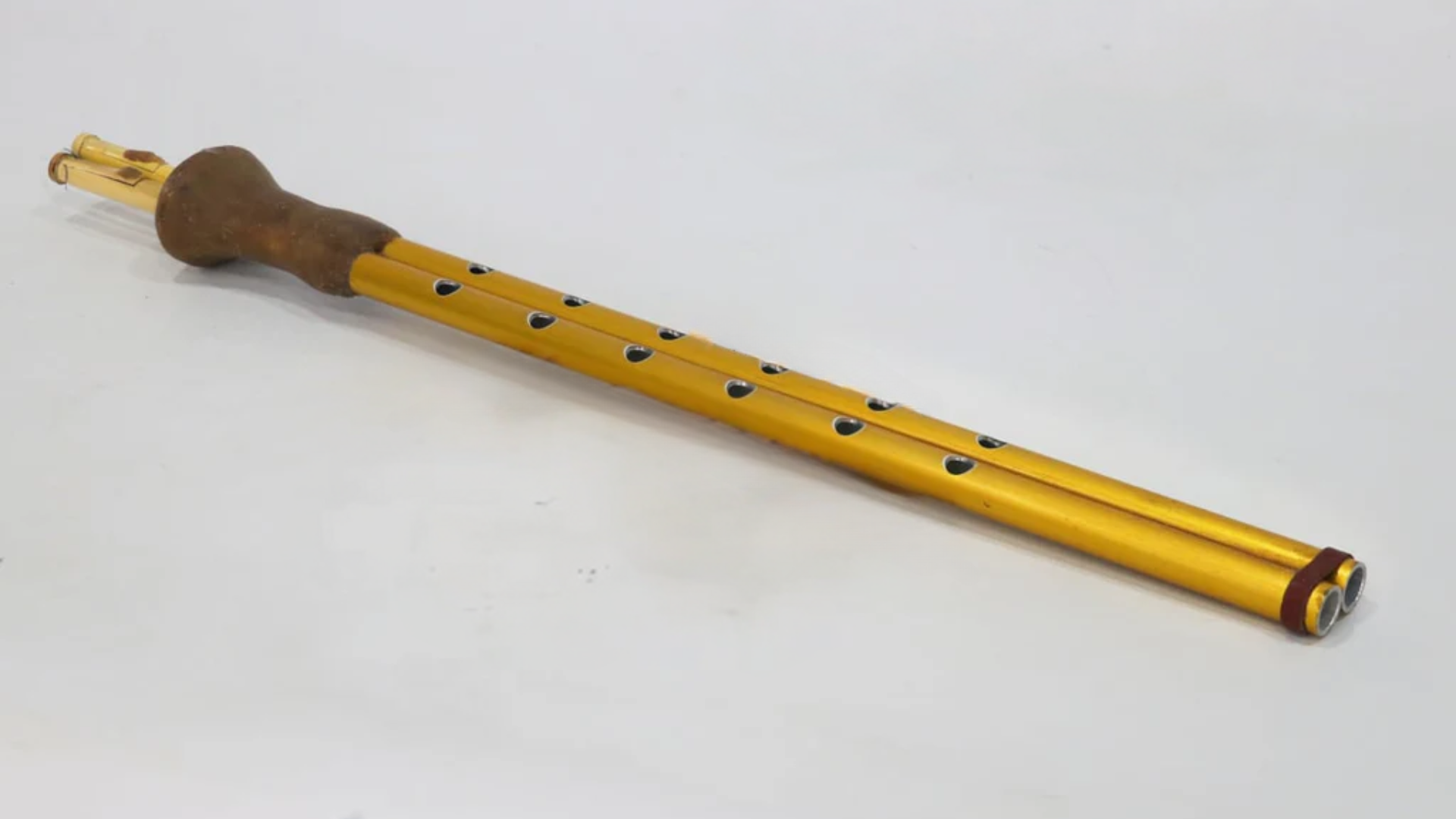
The mijwiz is a Lebanese double-pipe reed instrument where both pipes are played simultaneously.
- Origin: The mijwiz originated in Lebanon and is central to Lebanese folk music, particularly in the Bekaa Valley region.
- Sound: It produces a bright, festive, and energetic sound, with one pipe playing melody while the other provides harmony or drone.
- How it works: Musicians blow into both pipes at once, using circular breathing to maintain continuous sound while fingering complex melodies.
- Interesting fact: The mijwiz requires years of practice to master the coordination needed to play two independent melodic lines simultaneously.
21. Musical Bow
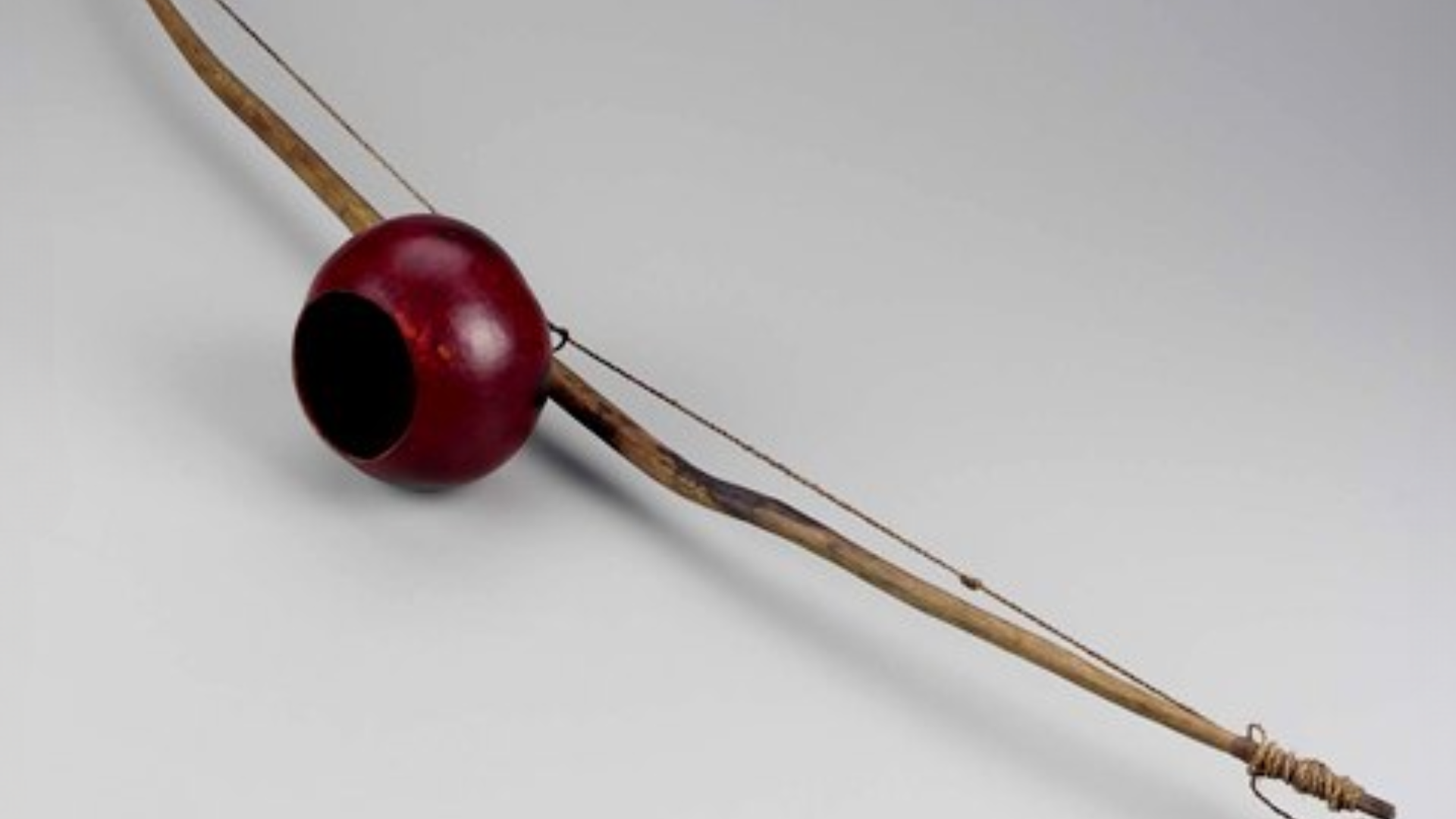
A musical bow is one of the earliest string instruments, consisting of a flexible stick with a string stretched between its ends.
- Origin: Musical bows are found in cultures worldwide and may represent the earliest form of string instrument, possibly derived from hunting bows.
- Sound: They produce a soft, intimate sound often enhanced by using the mouth or a gourd as a resonator.
- How it works: Musicians pluck or strike the string while using their mouth cavity or an attached resonator to amplify and modify the sound.
- Interesting fact: The musical bow is considered the ancestor of many modern string instruments, including guitars and violins.
22. Maddalam
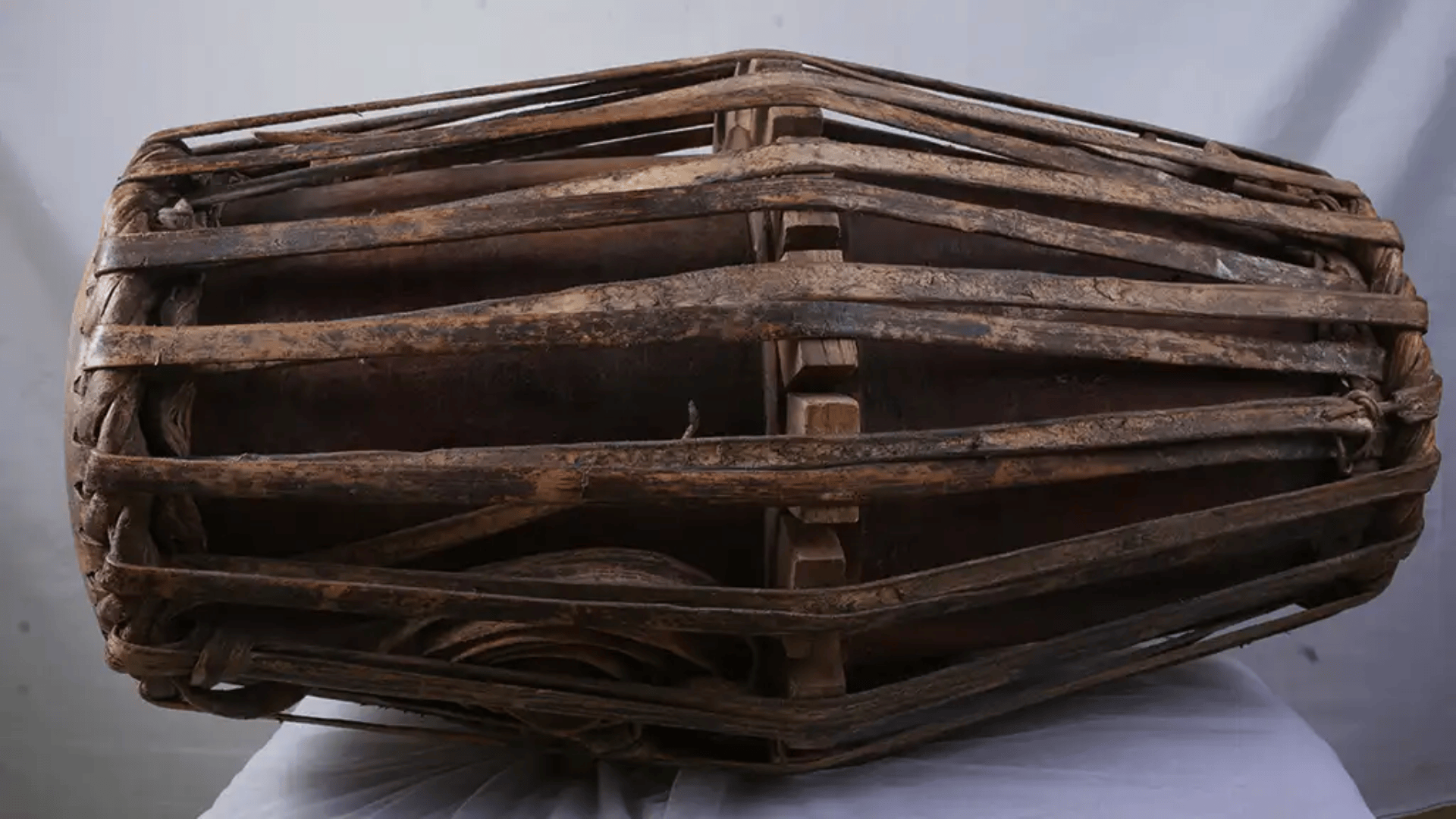
The maddalam is a large barrel-shaped drum from Kerala, India, used in traditional temple music and Kathakali dance performances.
- Origin: The maddalam originated in Kerala, South India, where it’s been central to temple rituals and classical dance for over 1,000 years.
- Sound: It produces a deep, powerful, and ceremonial sound, with complex rhythmic patterns that support religious and artistic performances.
- How it works: Musicians play with both hands, using fingers, palms, and fists to create different tones and dynamic levels.
- Interesting fact: The maddalam is considered sacred and requires special rituals before it can be played in temple ceremonies.
23. Monochord
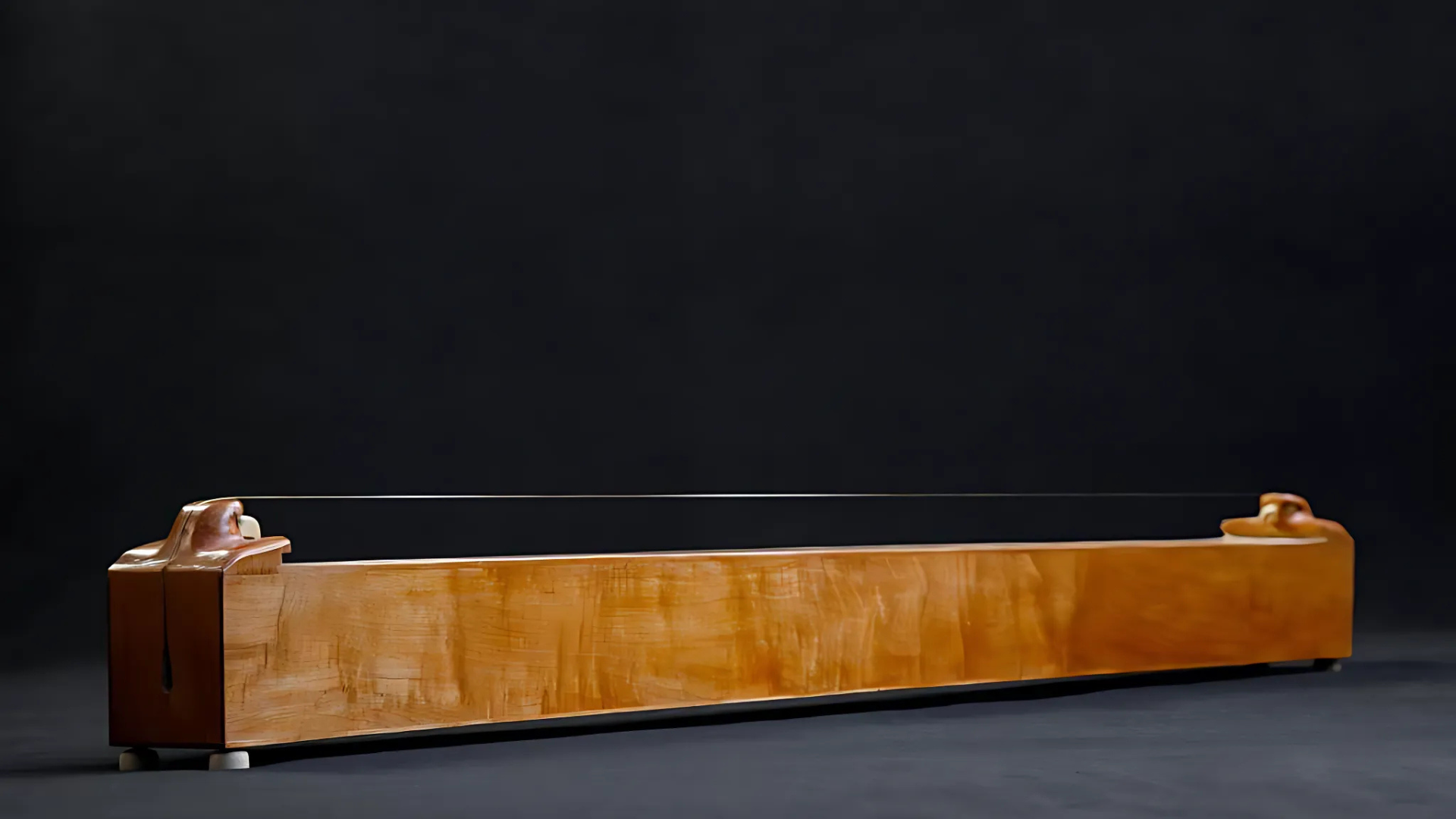
The monochord is a single-string instrument used for mathematical and musical demonstrations, with ancient origins in music theory.
- Origin: The monochord was first described by Pythagoras in ancient Greece as a tool for studying mathematical relationships in music.
- Sound: It produces a pure and simple sound, allowing clear demonstration of pitch relationships and harmonic ratios.
- How it works: A single string is stretched over a resonating box, with a movable bridge demonstrating how string length affects pitch.
- Interesting fact: The monochord was crucial in developing Western music theory and understanding the mathematical basis of harmony.
24. Musette
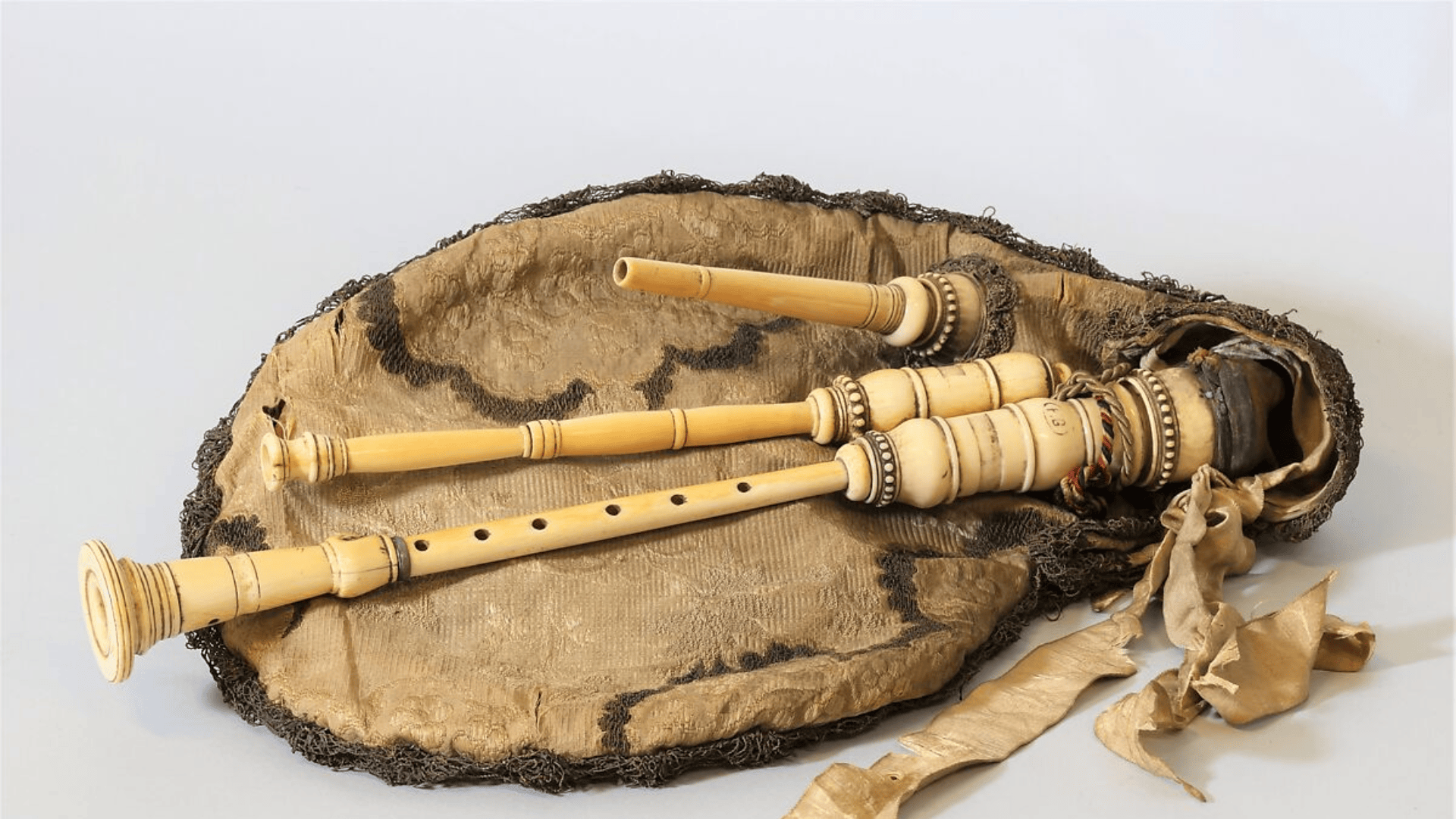
The musette is a small French bagpipe with a bellows system, popular in folk music and classical compositions.
- Origin: The musette originated in France during the 17th century and became popular in both folk music and aristocratic circles.
- Sound: It produces a sweet, gentle, and refined sound, much softer than larger bagpipes like the Scottish Highland pipes.
- How it works: A bellows pumps air into the bag, while the player fingers melody pipes and activates drone pipes for harmony.
- Interesting fact: The musette influenced many classical composers, including Bach, who wrote pieces specifically for this delicate bagpipe.
25. Mey
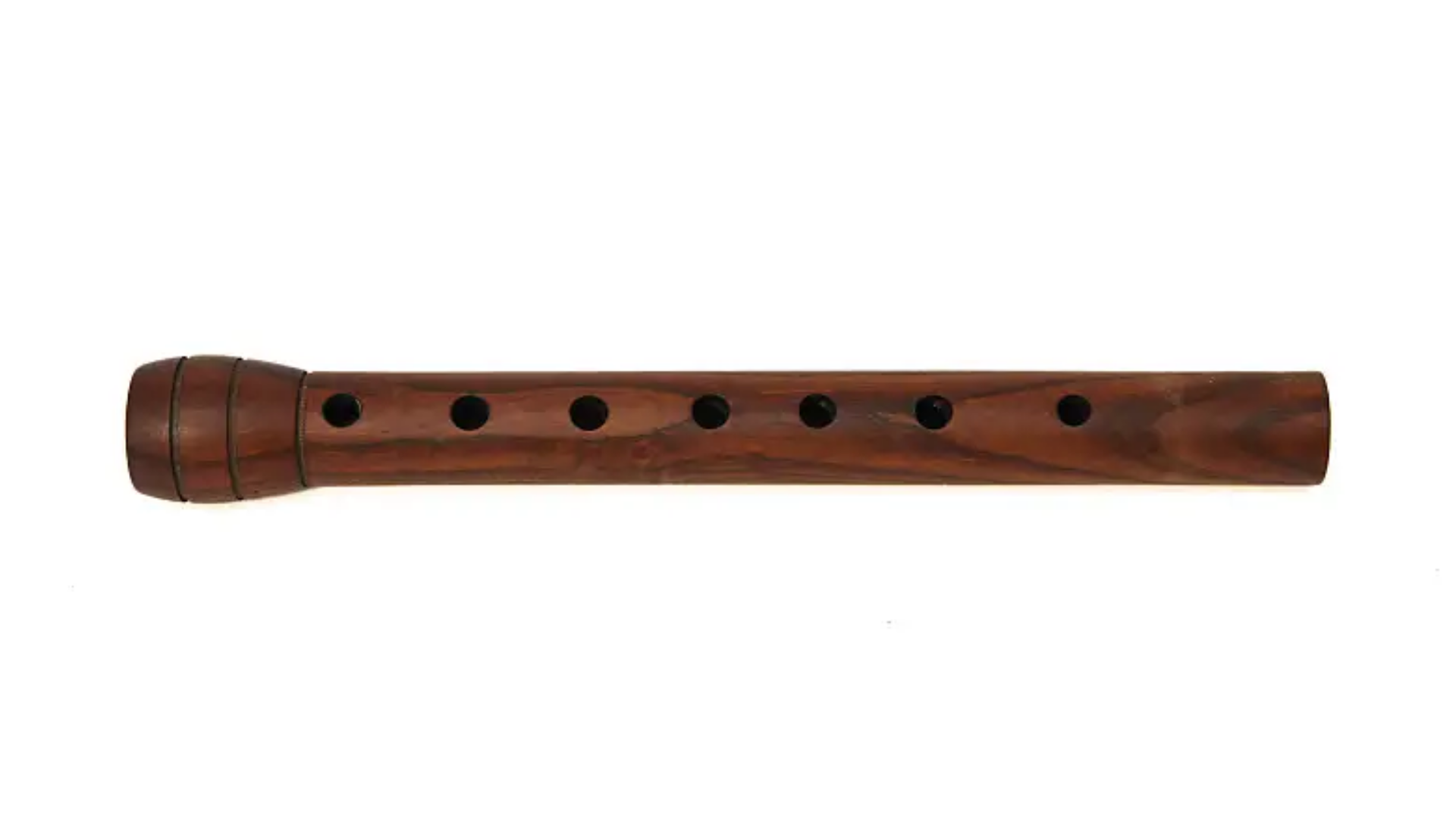
The mey is a Turkish double-reed wind instrument similar to a zurna, used in Turkish folk music and celebrations.
- Origin: The mey originated in Turkey and spread throughout the Ottoman Empire, becoming important in military and folk music.
- Sound: It produces a loud, penetrating, and highly ornamented sound, perfect for outdoor celebrations and dance music.
- How it works: Musicians blow through a double reed while using complex fingering techniques to create the ornate melodies typical of Turkish music.
- Interesting fact: The mey is often played with a davul (drum) to create the traditional Turkish folk music ensemble called a zurna-davul duo.
26. Mandocello
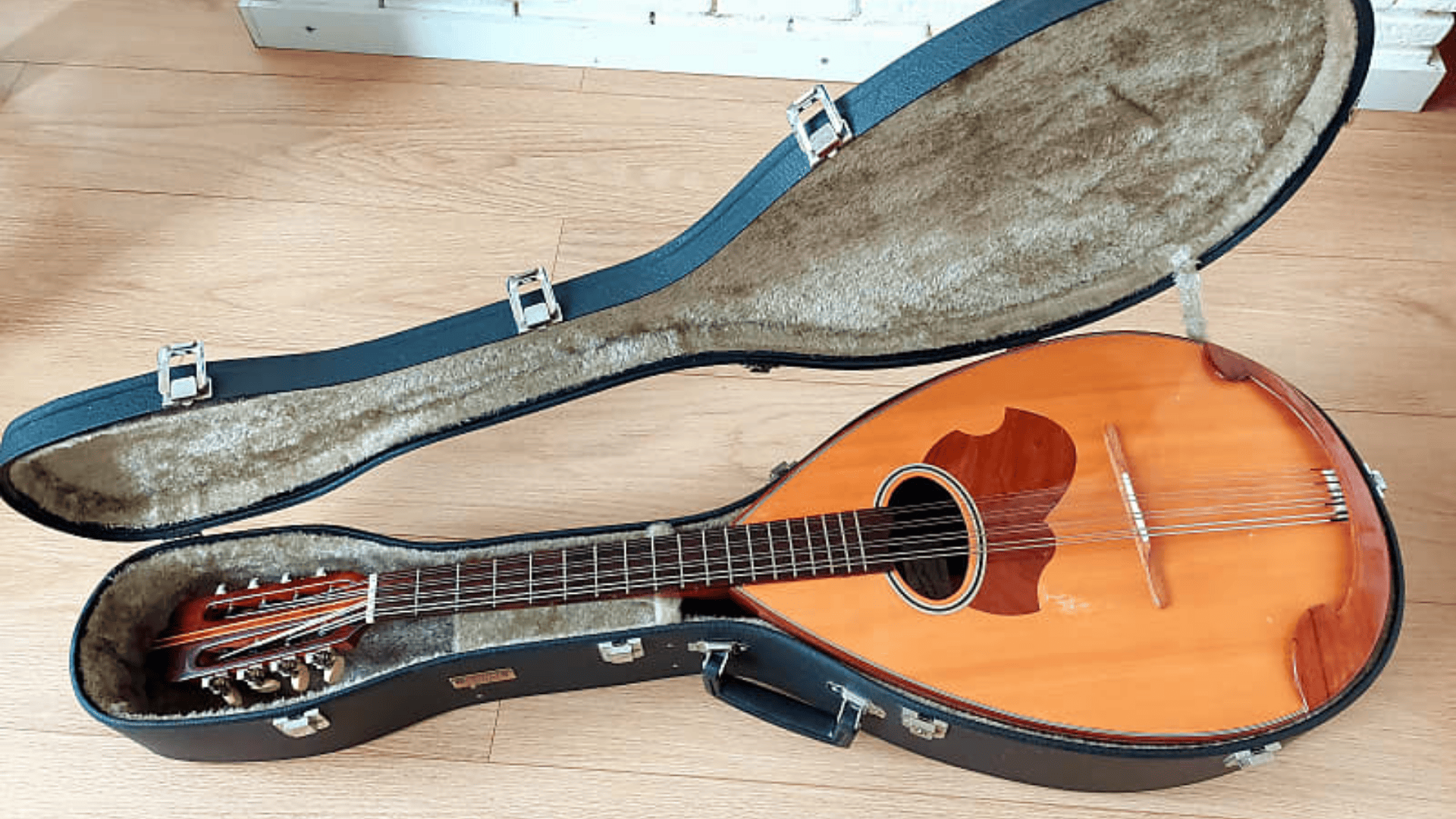
The mandocello is the largest member of the mandolin family, tuned an octave below the mandola and providing bass voices.
- Origin: The mandocello was developed in Italy as part of the complete mandolin family, designed for orchestral and ensemble work.
- Sound: It produces a deep, rich, and resonant sound, providing the foundation for mandolin orchestras and chamber music.
- How it works: Musicians play it with a pick like other mandolin family instruments, but its large size and long strings produce much lower pitches.
- Interesting fact: The mandocello is held upright like a small cello, with an endpin to support its weight during performance.
27. Maqrunah

The maqrunah is a Libyan double-pipe wind instrument where two pipes are played simultaneously by one musician.
- Origin: The maqrunah originated in Libya and is traditional to Berber and Arab musical cultures of North Africa.
- Sound: It produces a rich and complex sound, with one pipe providing melody while the other creates a drone or harmony.
- How it works: Musicians blow into both pipes simultaneously, using different fingering techniques to create two-part music.
- Interesting fact: The maqrunah requires exceptional breath control and coordination, as players must manage two separate melodic lines at once.
28. Mohan Veena
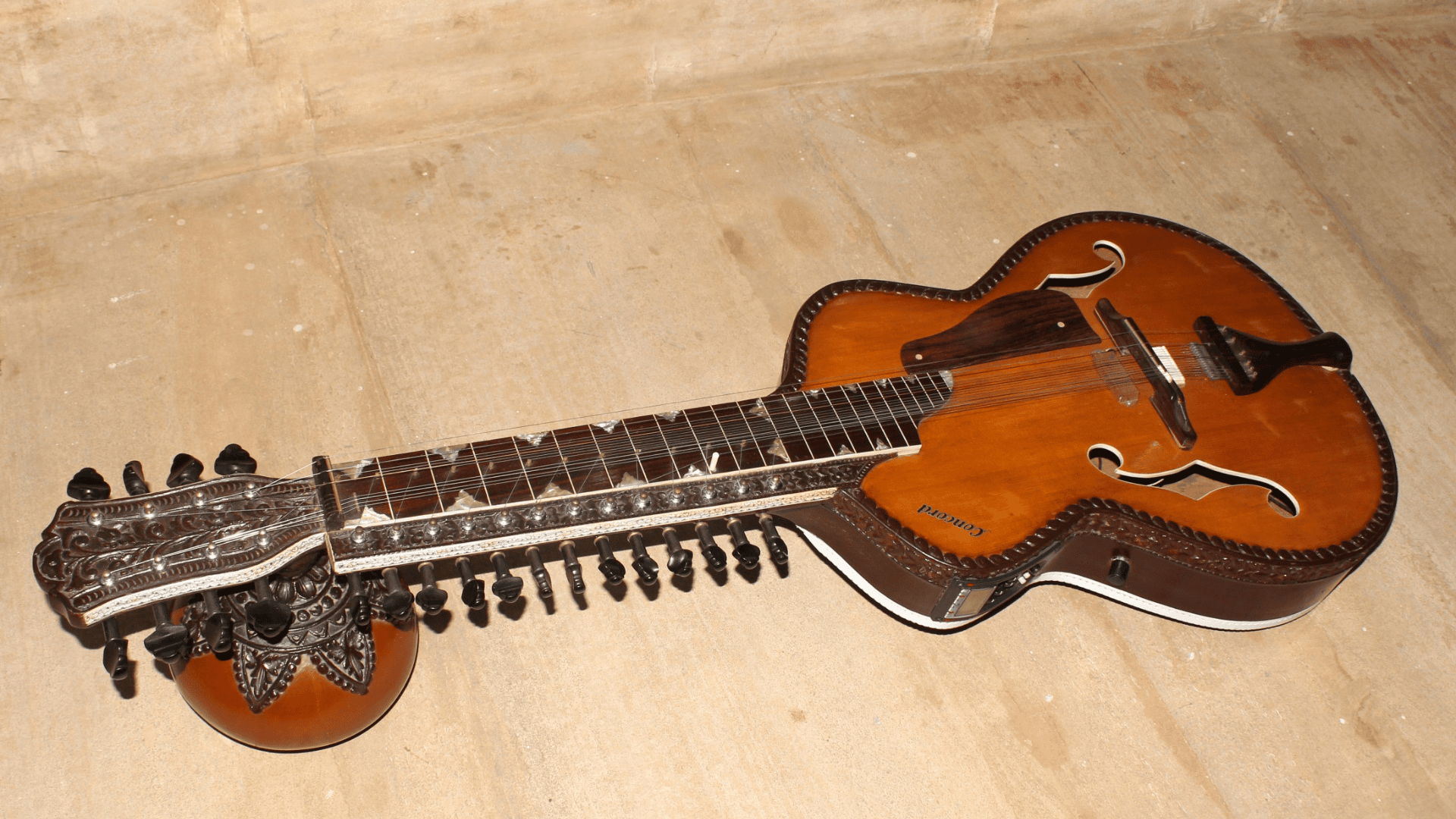
The Mohan veena is a unique Indian slide guitar blending traditional veena and guitar elements.
Origin: Created in India and popularized by musician Vishwa Mohan Bhatt, it merges Indian classical techniques with slide guitar.
Sound: It has a soulful, fluid tone perfect for raga melodies, producing long, singing slides and resonant drones.
How it works: It has multiple melodies and sympathetic strings played with a slide and fingerpicking, creating rich layers of sound.
Interesting fact: The Mohan veena helped popularize Indian slide guitar globally, earning Grammy awards and fusion fame.
29. Moonlute
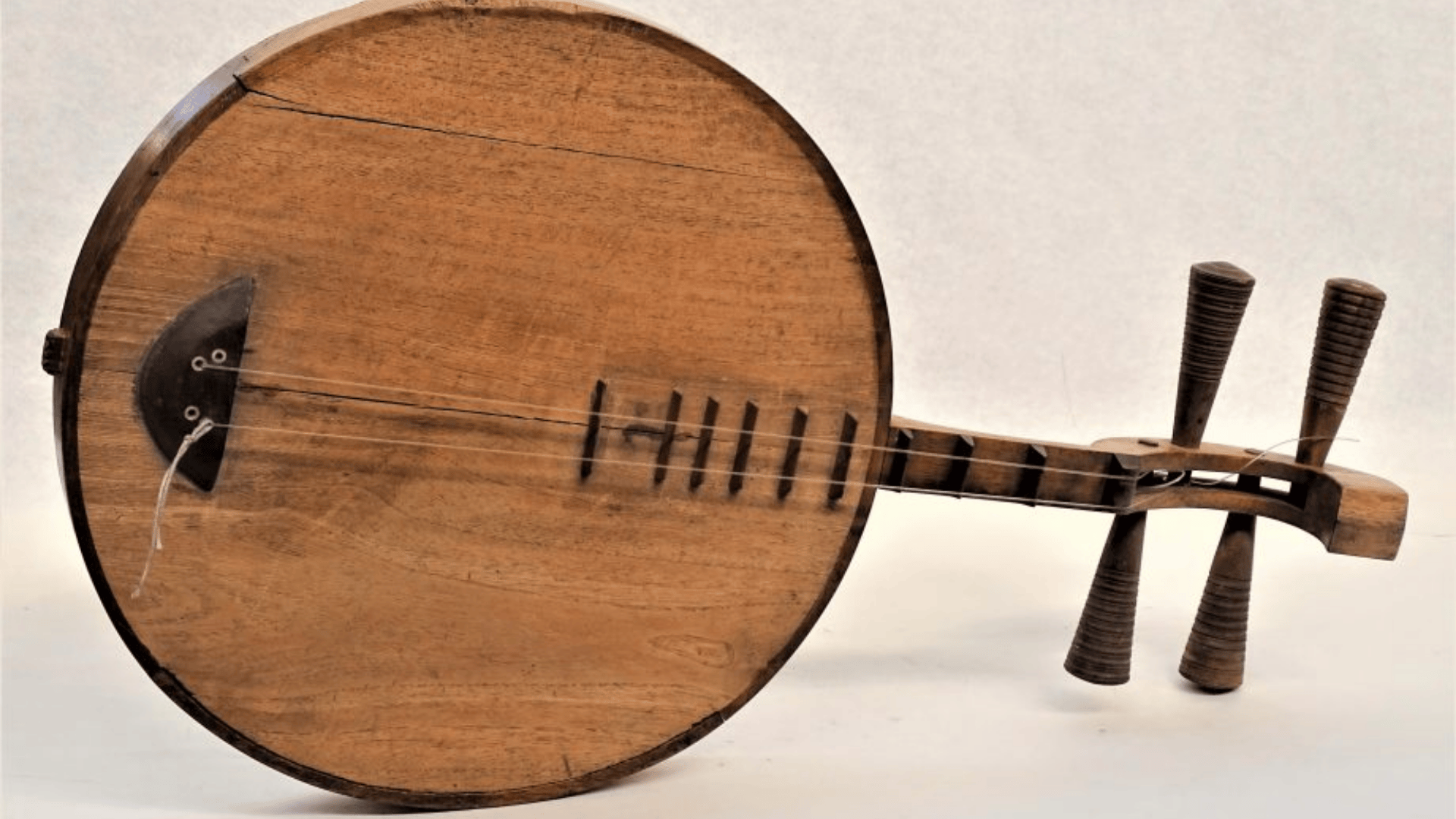
The moonlute is a Chinese plucked string instrument with a round body, also known as the ruan in Chinese.
- Origin: The moonlute originated in China over 2,000 years ago and remains important in Chinese traditional music and opera.
- Sound: It produces a bright, clear, and melodically expressive sound, with a balanced tone suitable for both solo and ensemble work.
- How it works: Musicians pluck the strings with picks while fretting the neck to create melodies and chords.
- Interesting fact: The round body resembles a full moon, which is why it’s called the “moon lute” in English translations.
30. Musical Saw
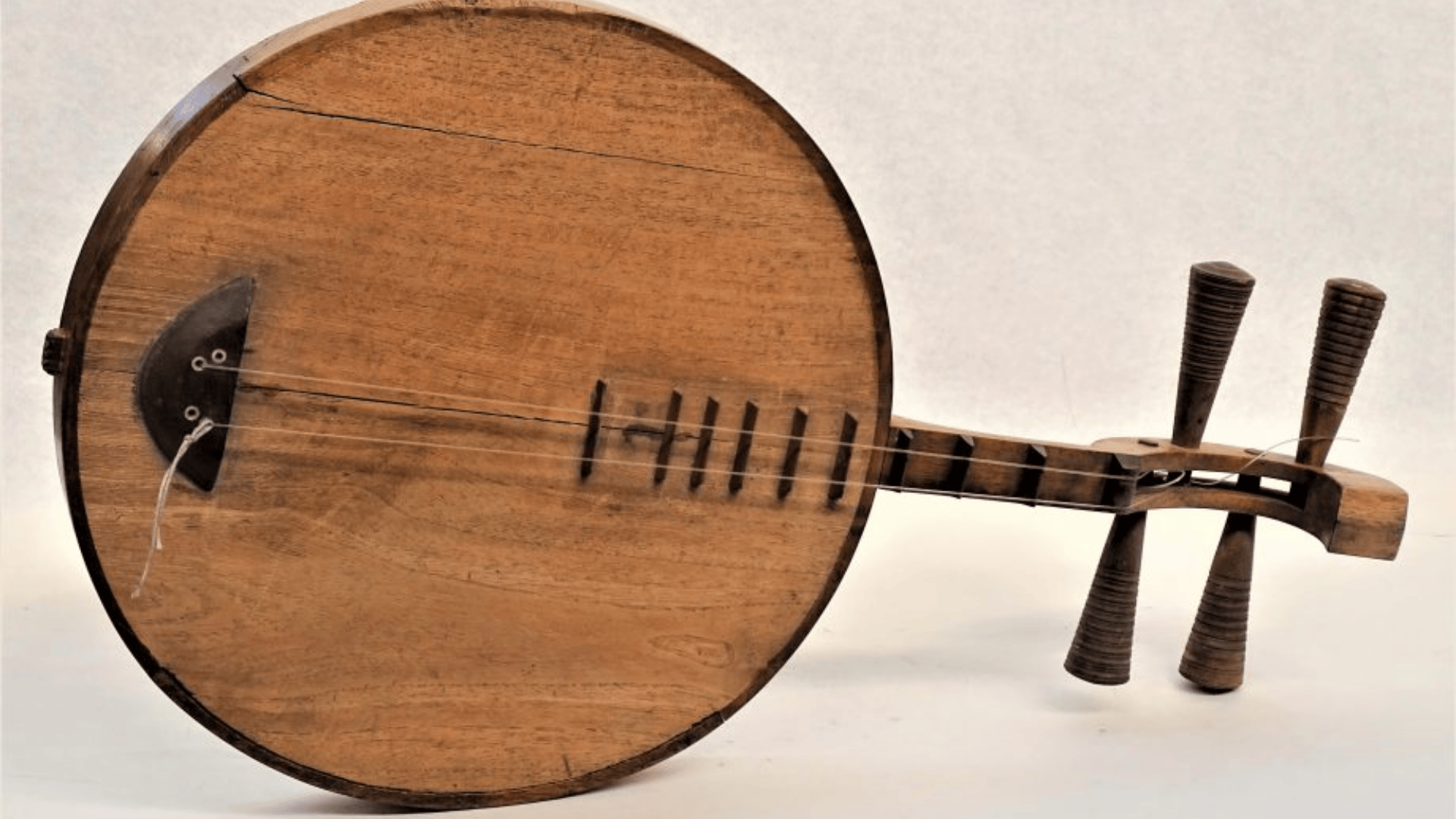
A musical saw is a flexible steel saw blade played with a violin bow, creating haunting, theremin-like sounds.
- Origin: The musical saw emerged in America in the late 19th century, often played by lumberjacks and rural musicians.
- Sound: It produces an eerie, sliding, and ethereal sound similar to a theremin or human voice.
- How it works: Musicians bend the saw blade while bowing it, creating different pitches by changing the blade’s curvature.
- Interesting fact: The musical saw became popular in vaudeville and early radio, and is still used today in film soundtracks for spooky effects.
31. Mbira Dzavadzimu
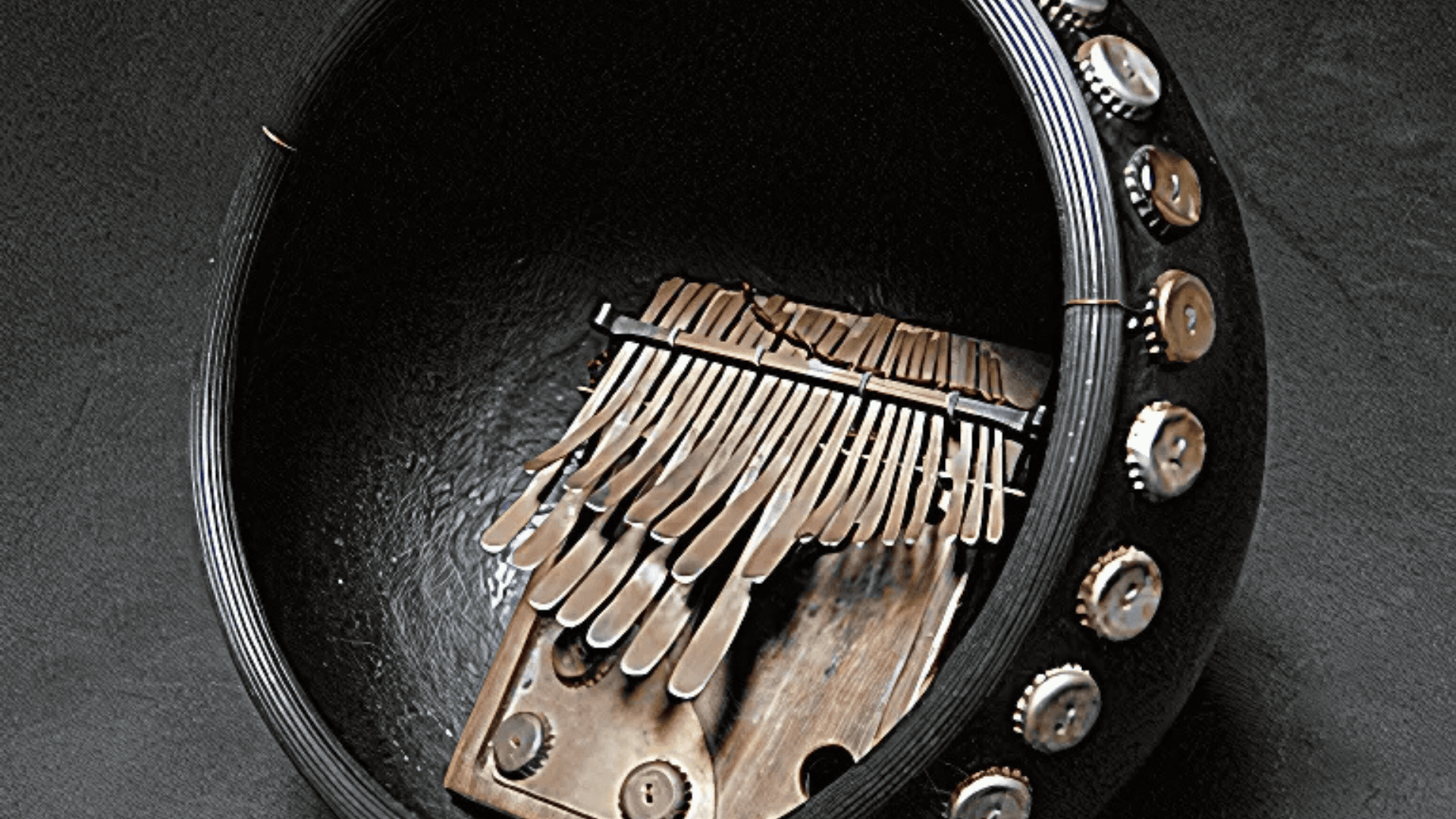
The mbira dzavadzimu is a specific type of Zimbabwean thumb piano used in religious ceremonies to communicate with ancestors.
- Origin: The mbira dzavadzimu originated among the Shona people of Zimbabwe, where it’s considered the most sacred of all mbira types.
- Sound: It produces a mystical, complex, and spiritually significant sound, with buzzing bottle caps adding texture to the metal strips.
- How it works: Musicians pluck 22-28 metal strips with their thumbs while bottle caps or shells create buzzing overtones.
- Interesting fact: The mbira dzavadzimu is believed to induce trance states that allow communication with ancestral spirits during religious ceremonies.
Wrapping Up Our Musical Ride
From the popular mandolin to the rare mbira dzavadzimu, M-instruments show us just how creative humans can be when making music. Each instrument has its special voice and story to tell.
Which M-instrument caught your attention the most? Maybe it’s time to try playing one yourself! Local music shops often have lessons for beginners, and many online tutorials can help you get started.
Share this article with a friend who loves music, and let us know in the comments which instrument you’d like to learn. Your musical tale is just beginning!
Curious about other instruments too? Check out our other musical instrument guides. You might find your next favorite instrument here.






